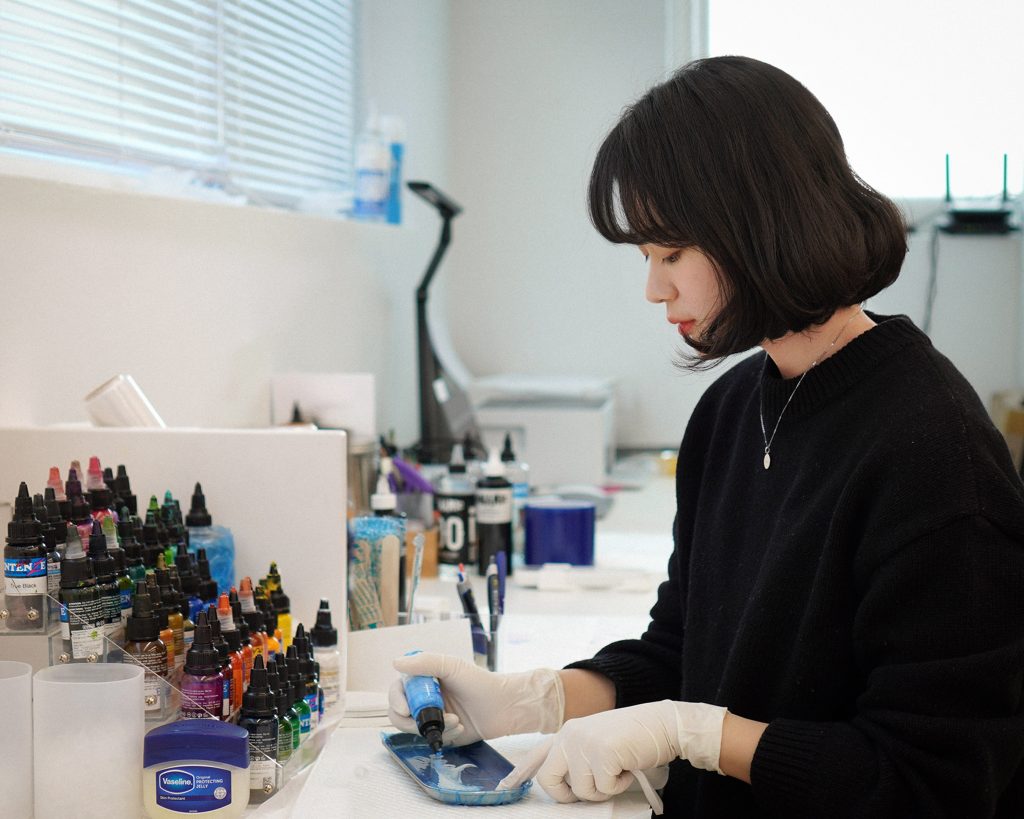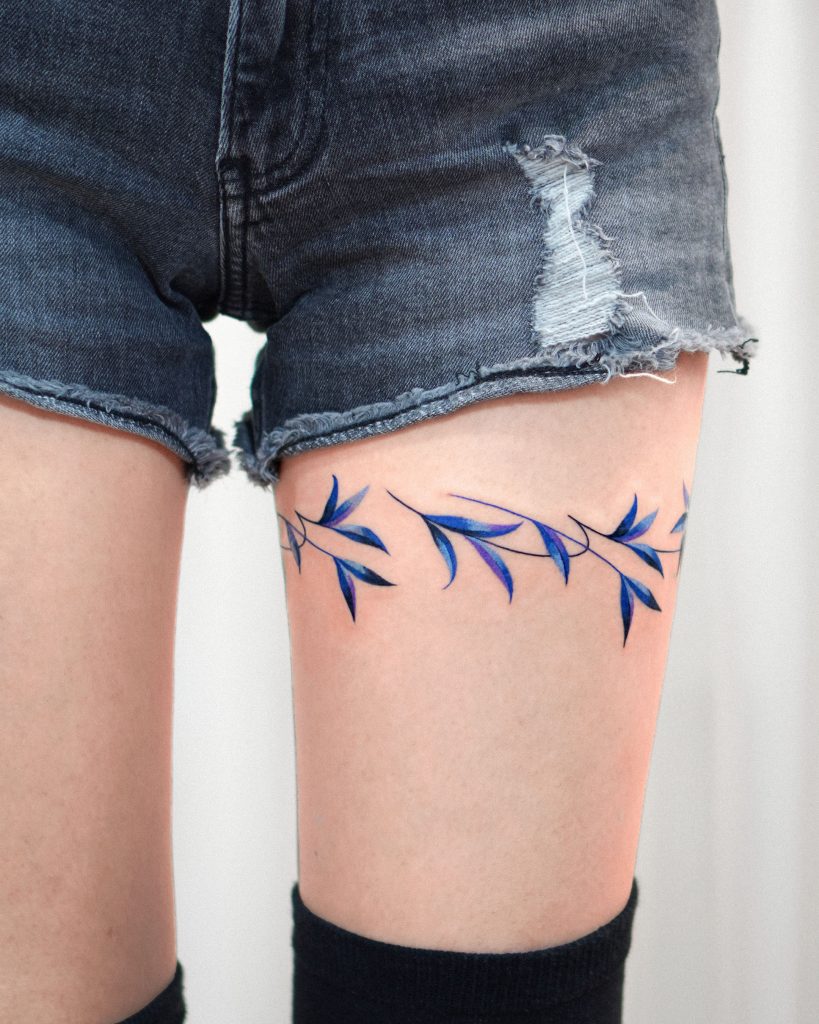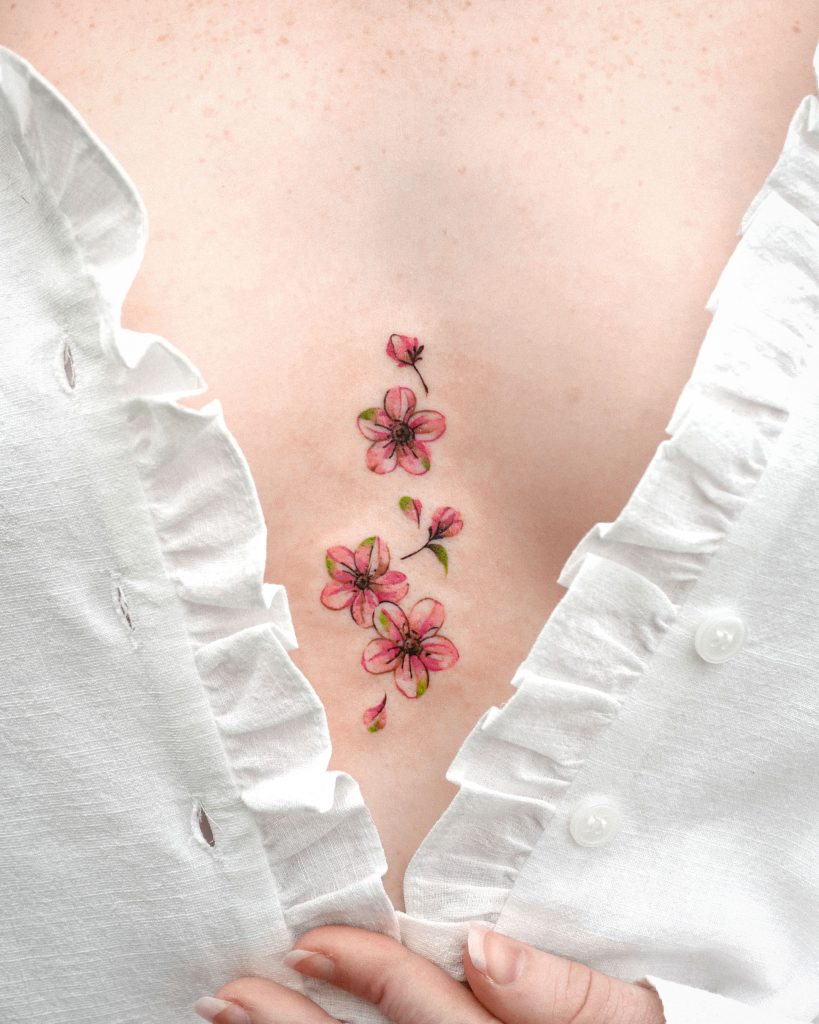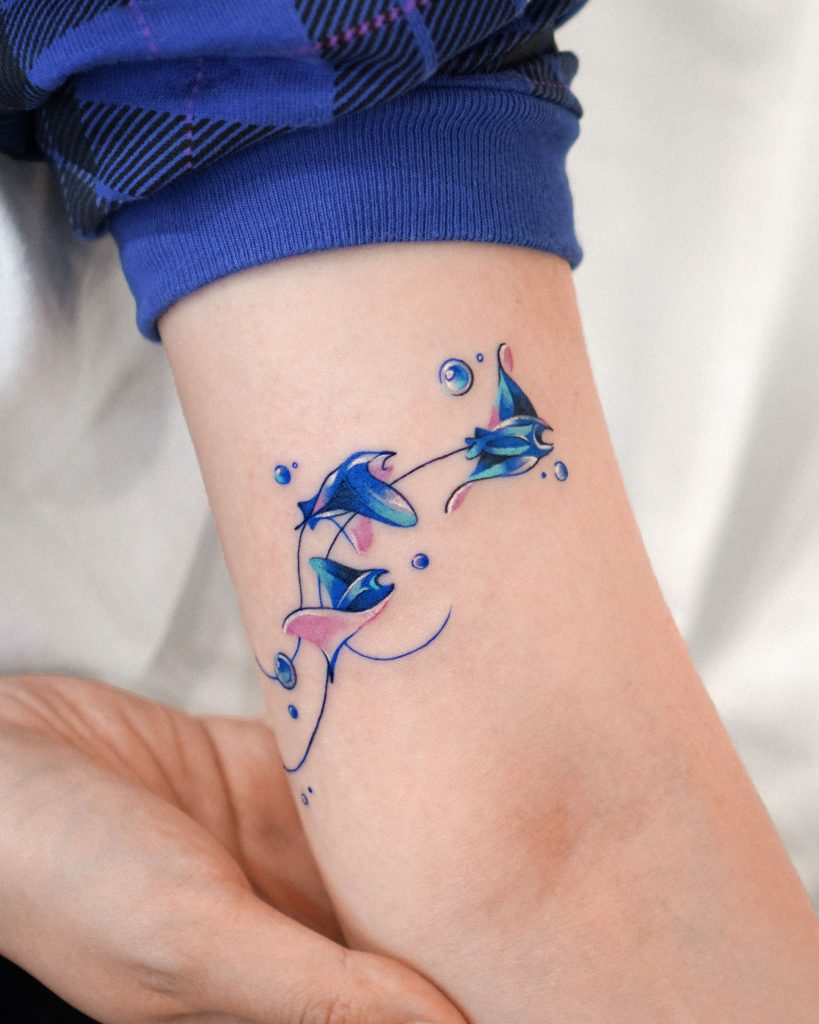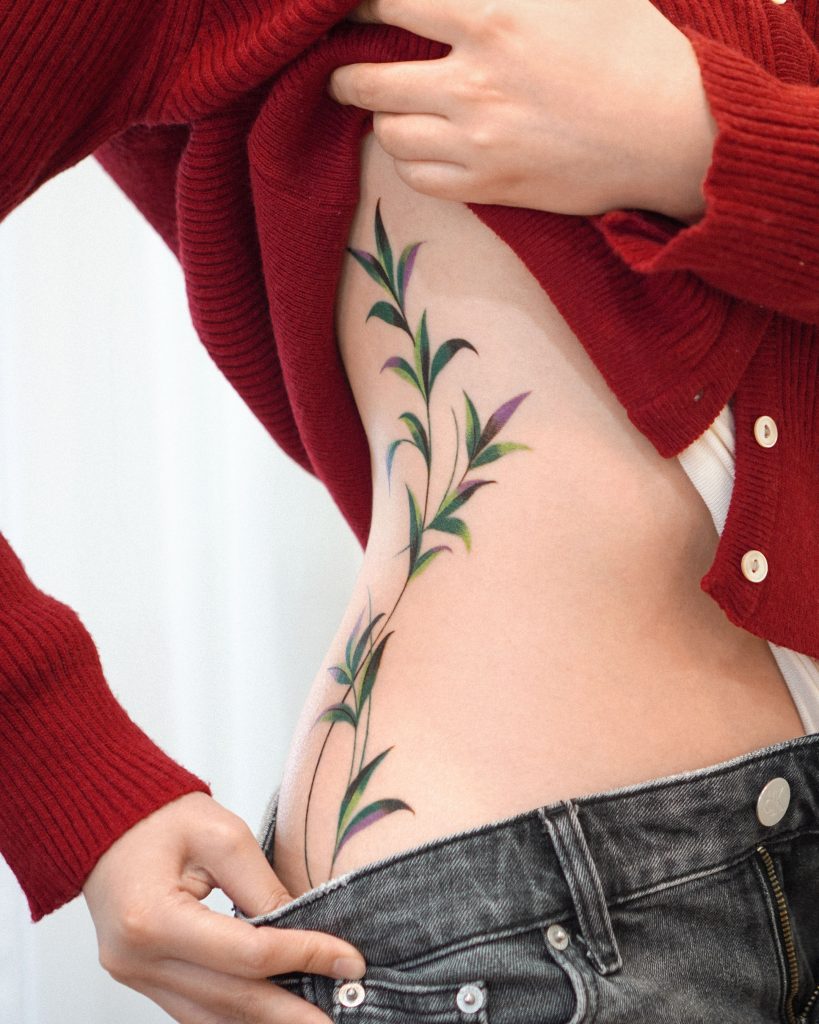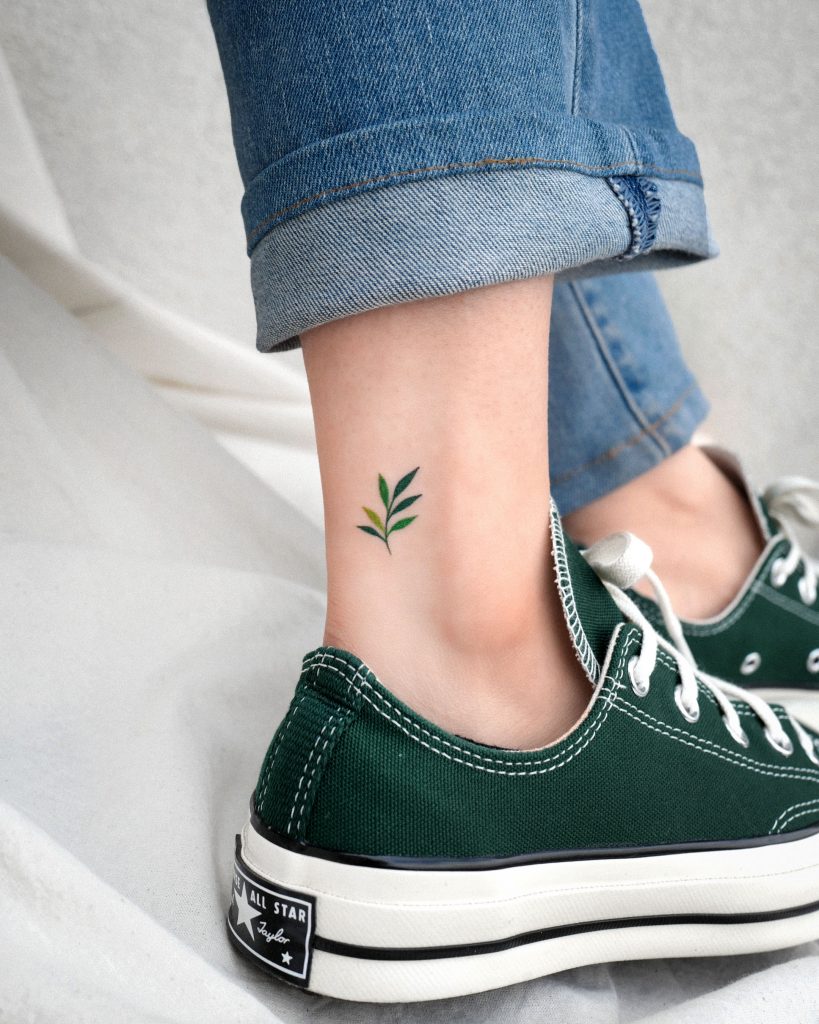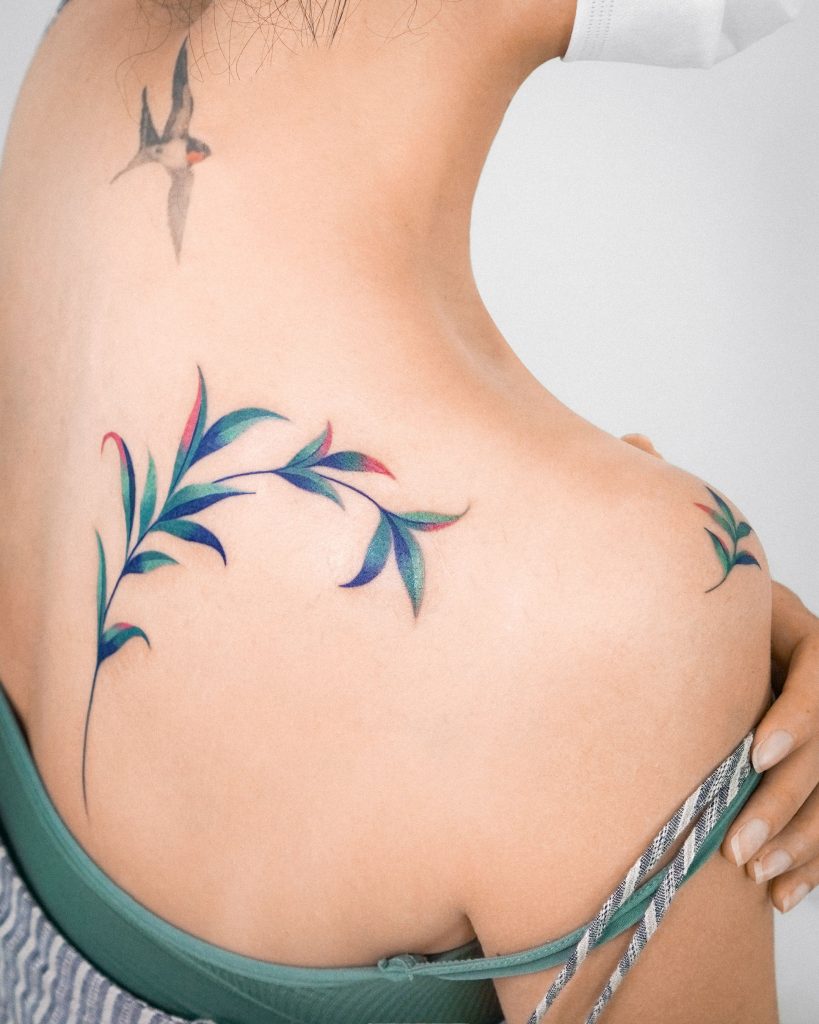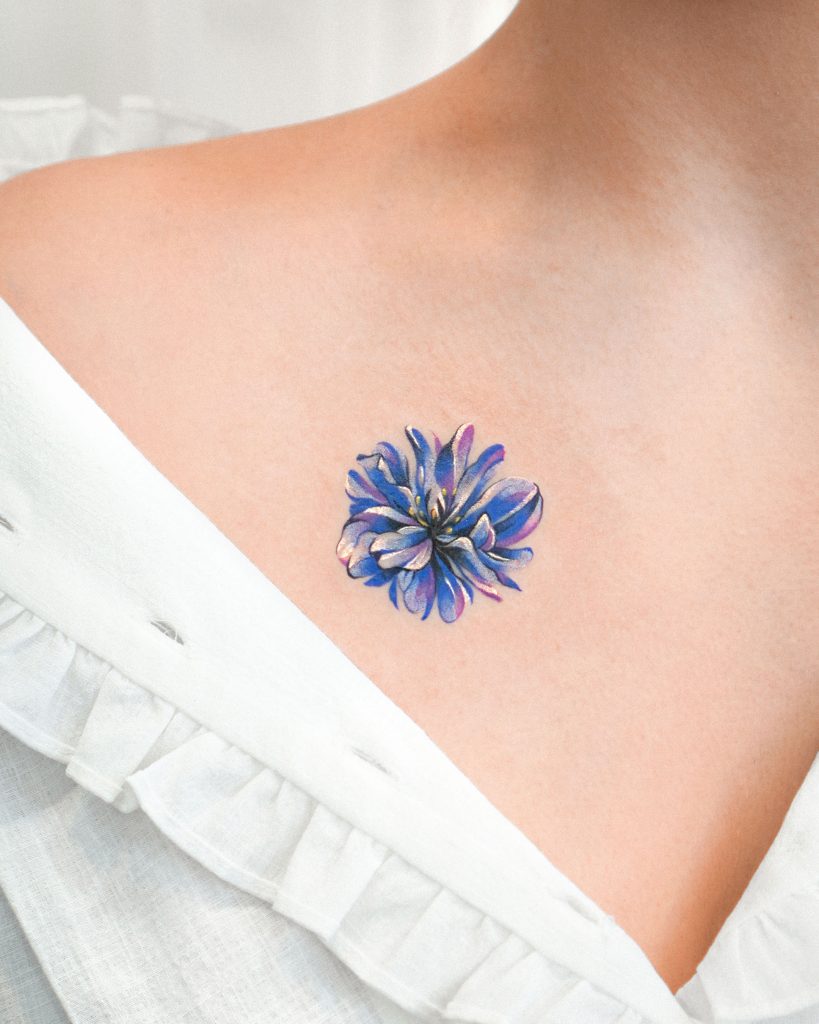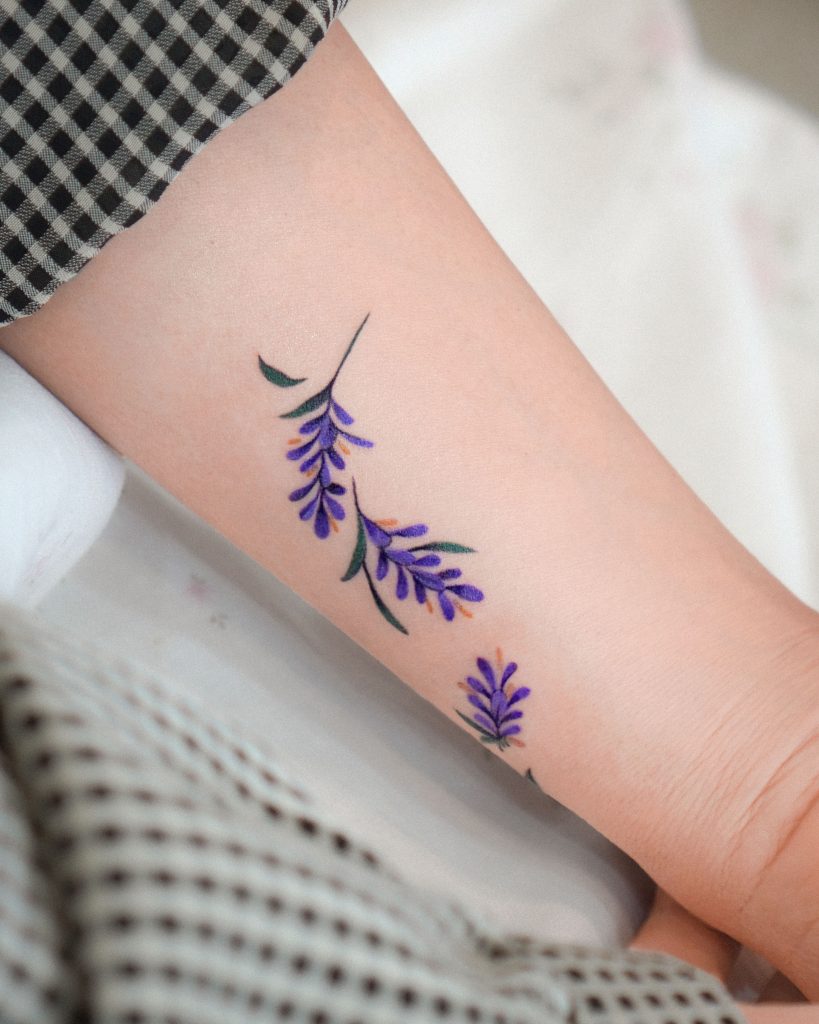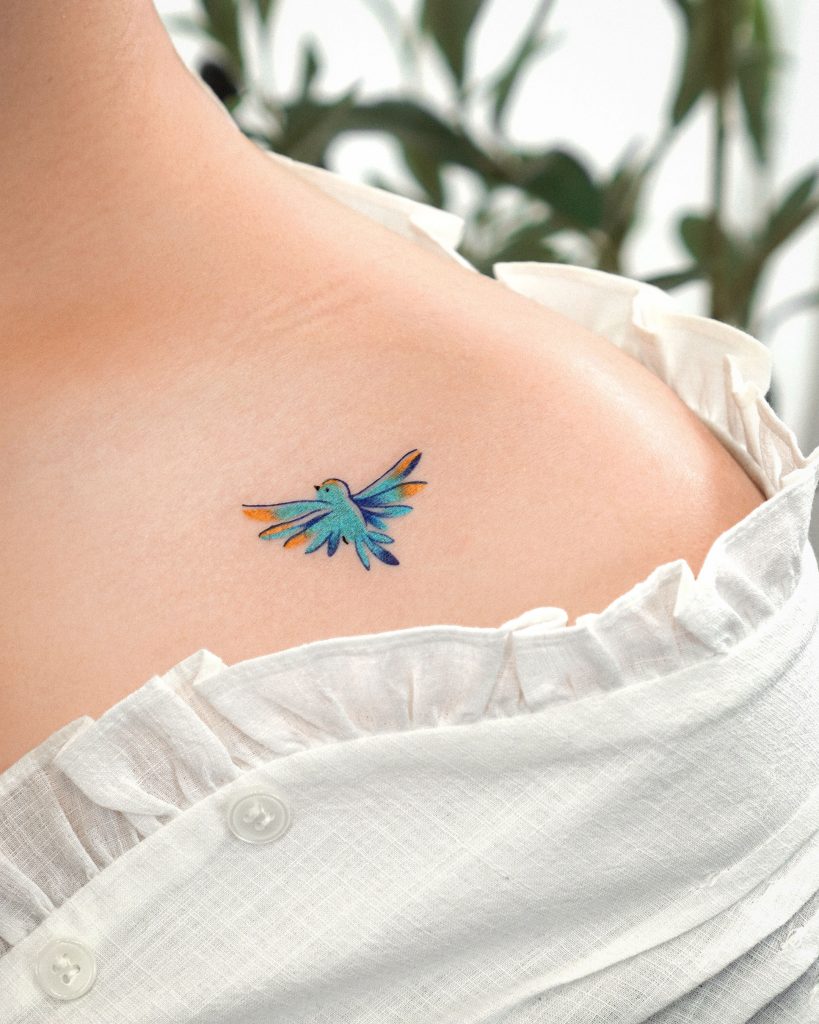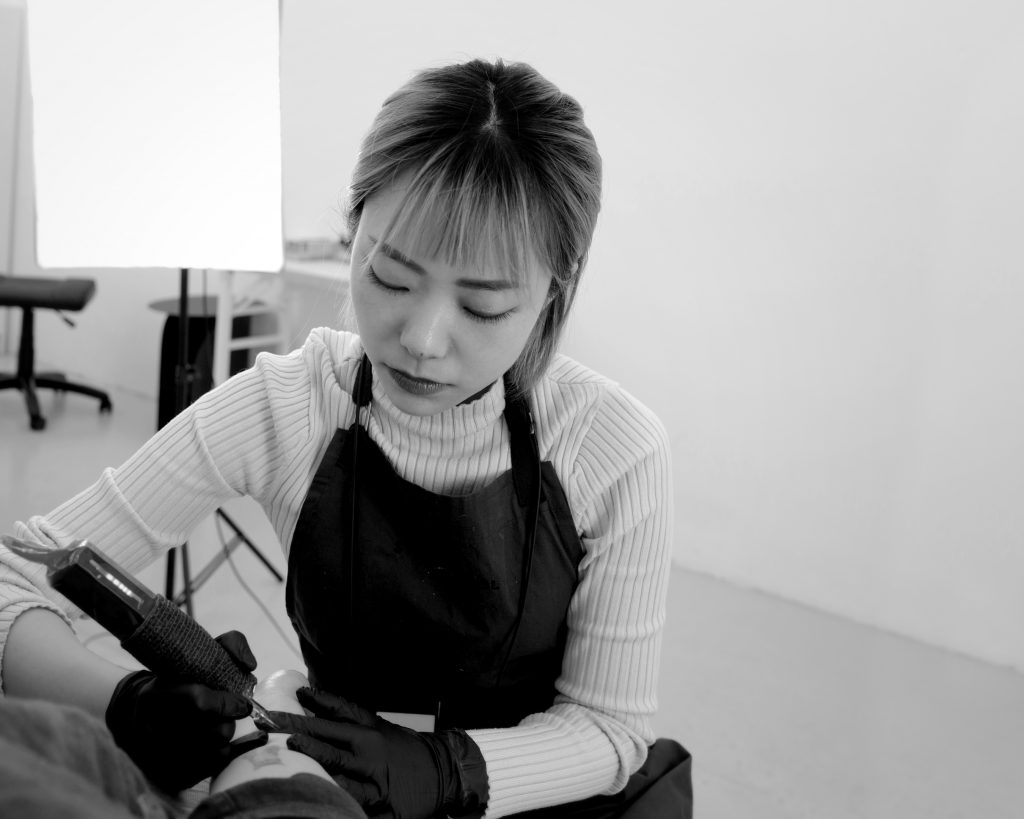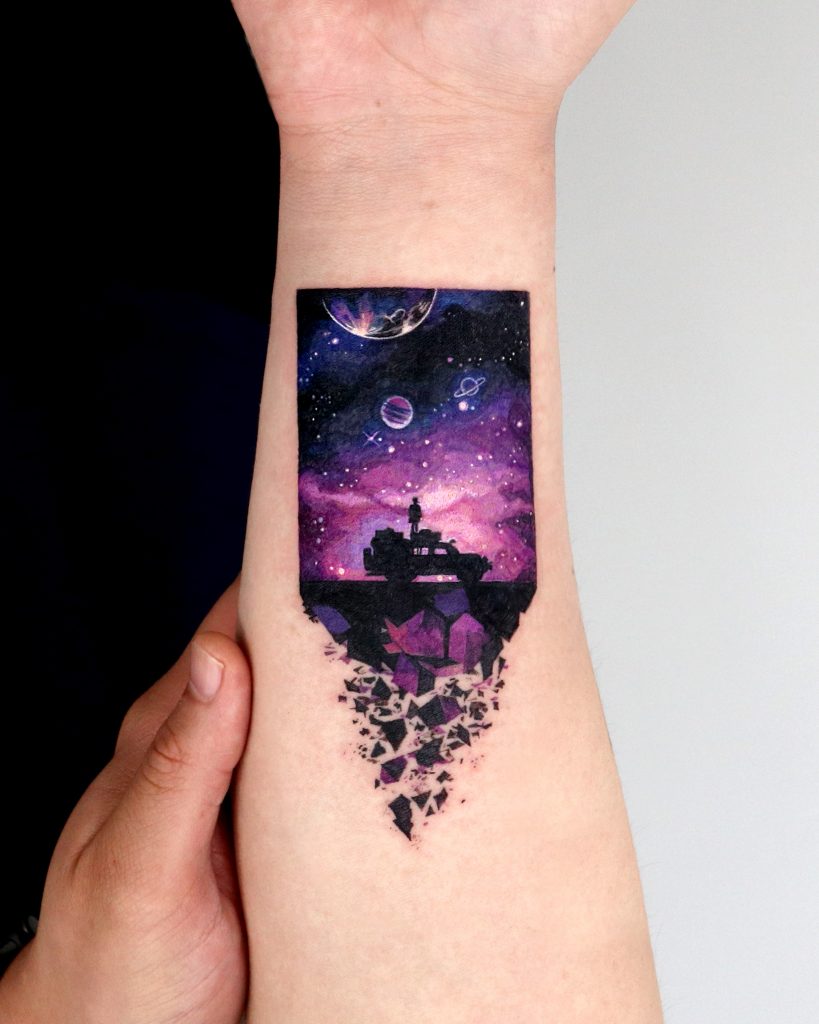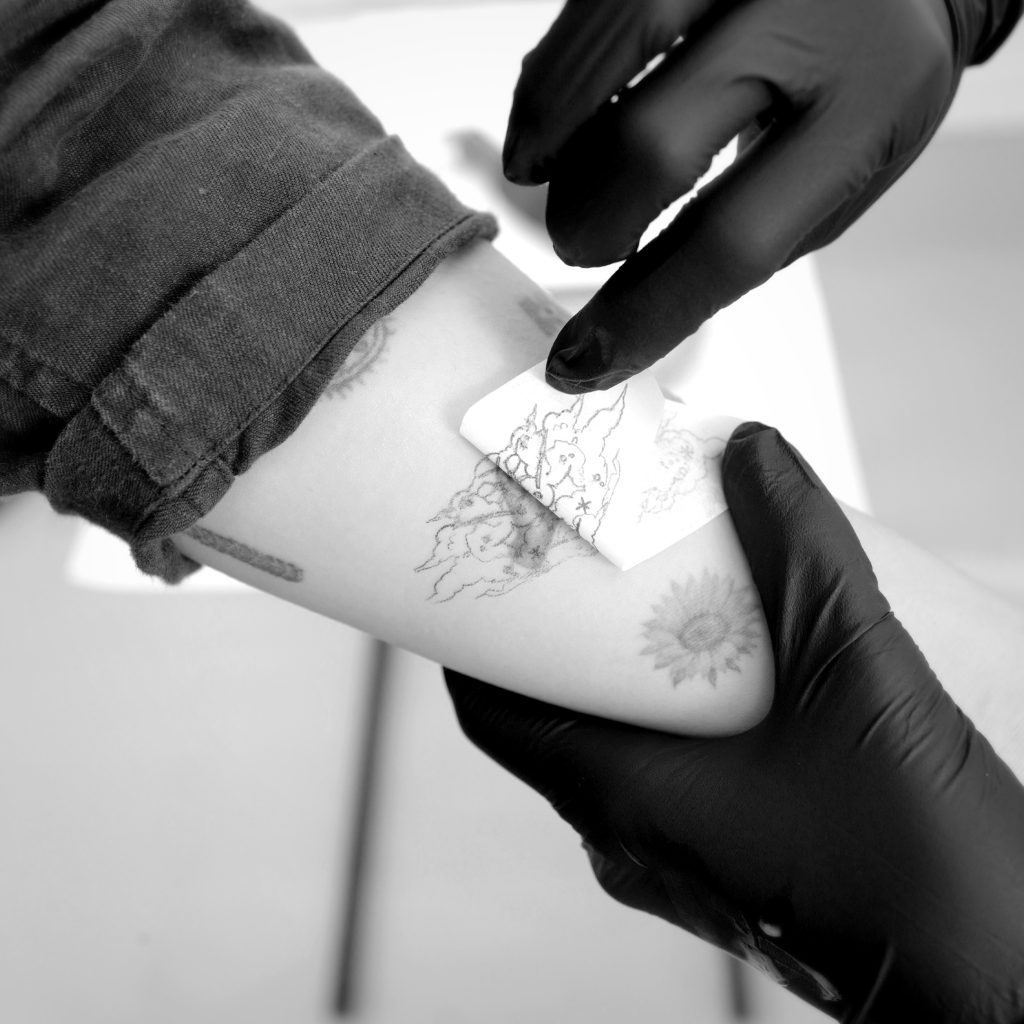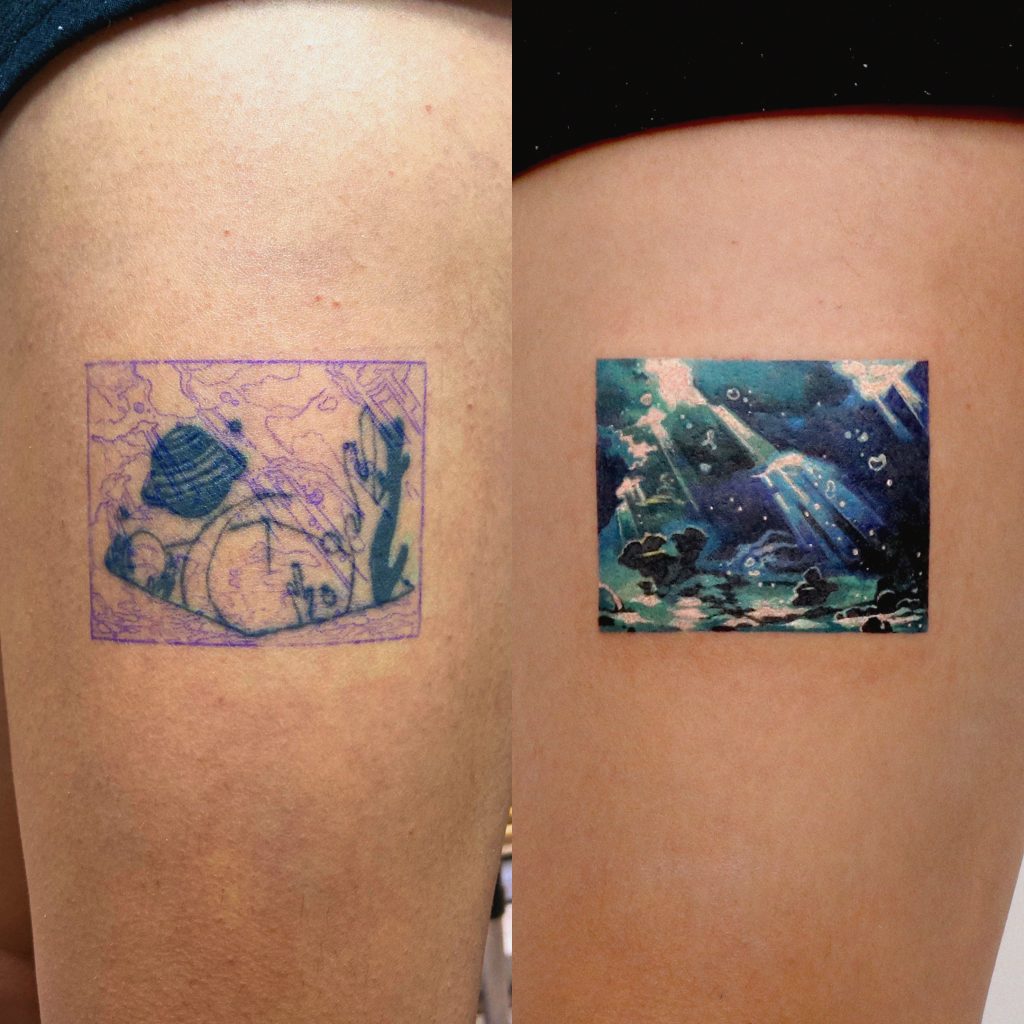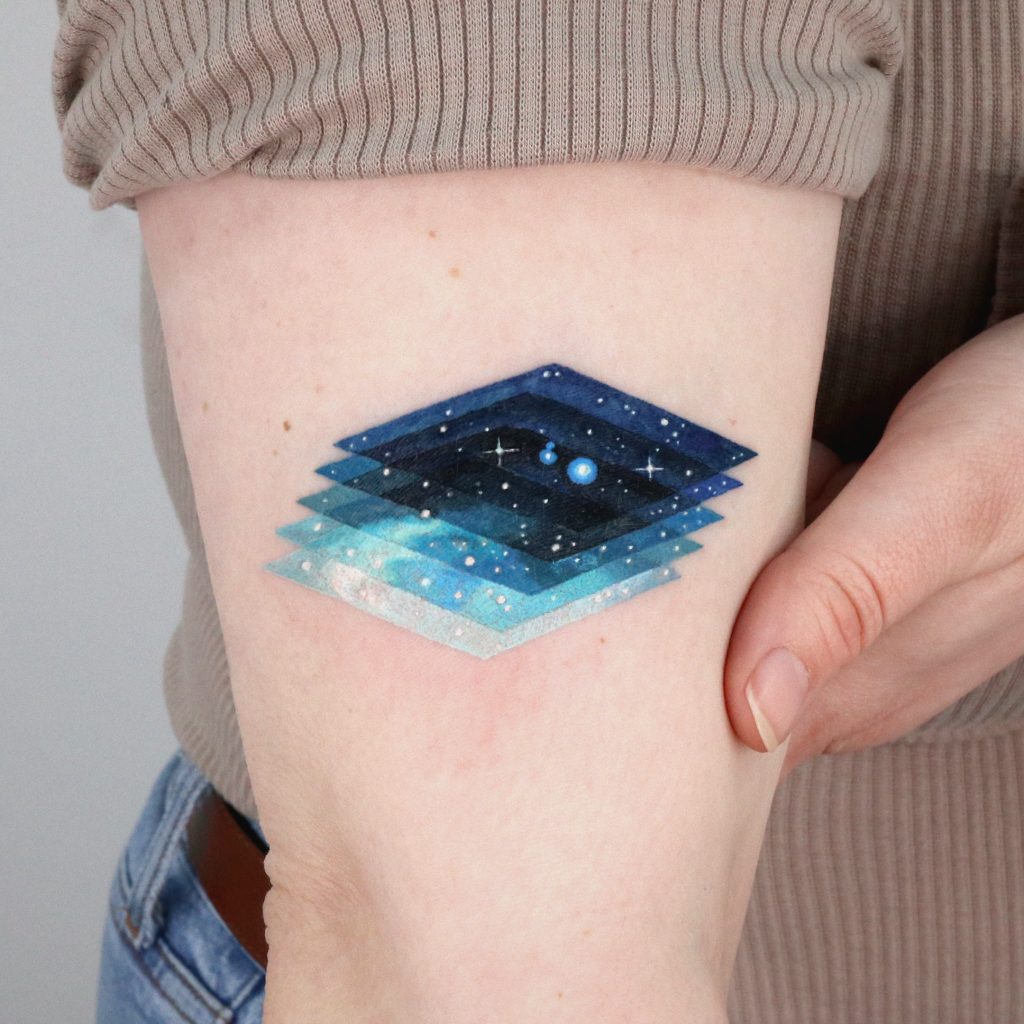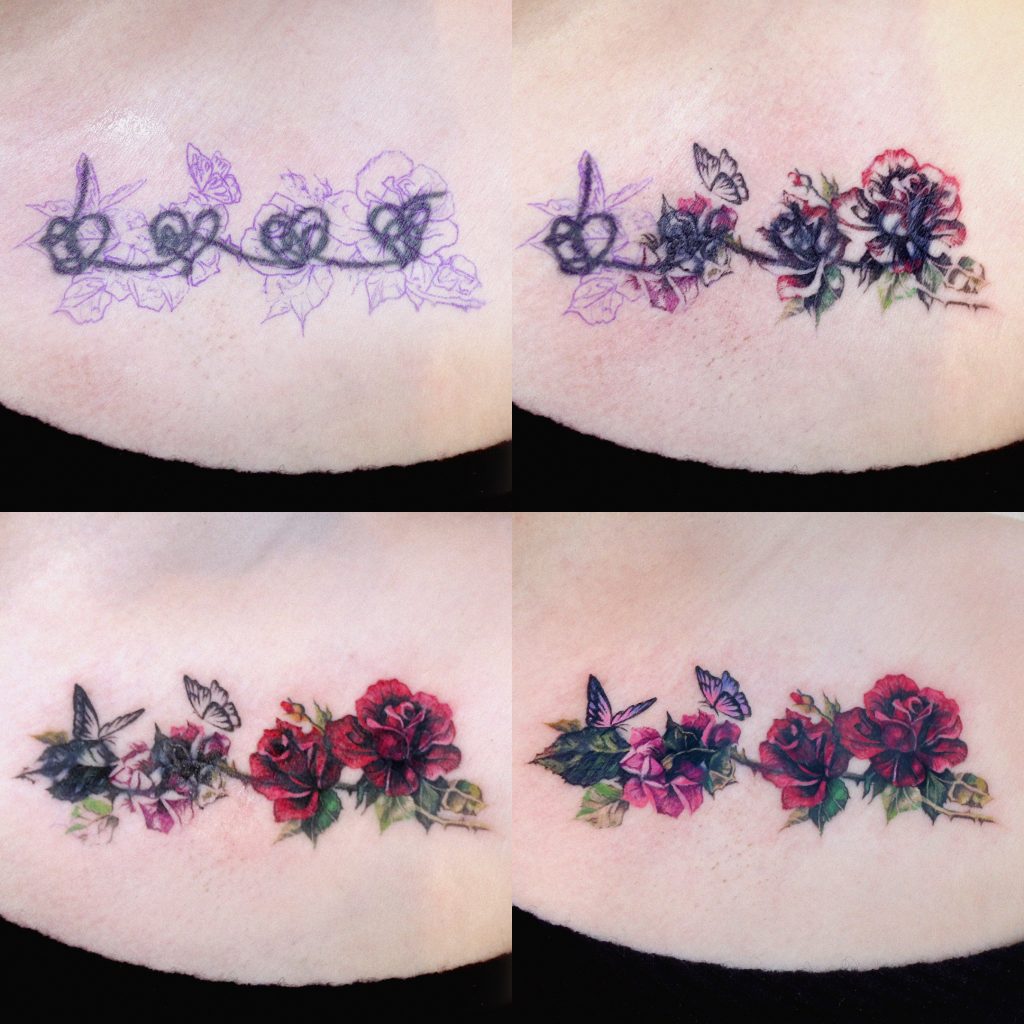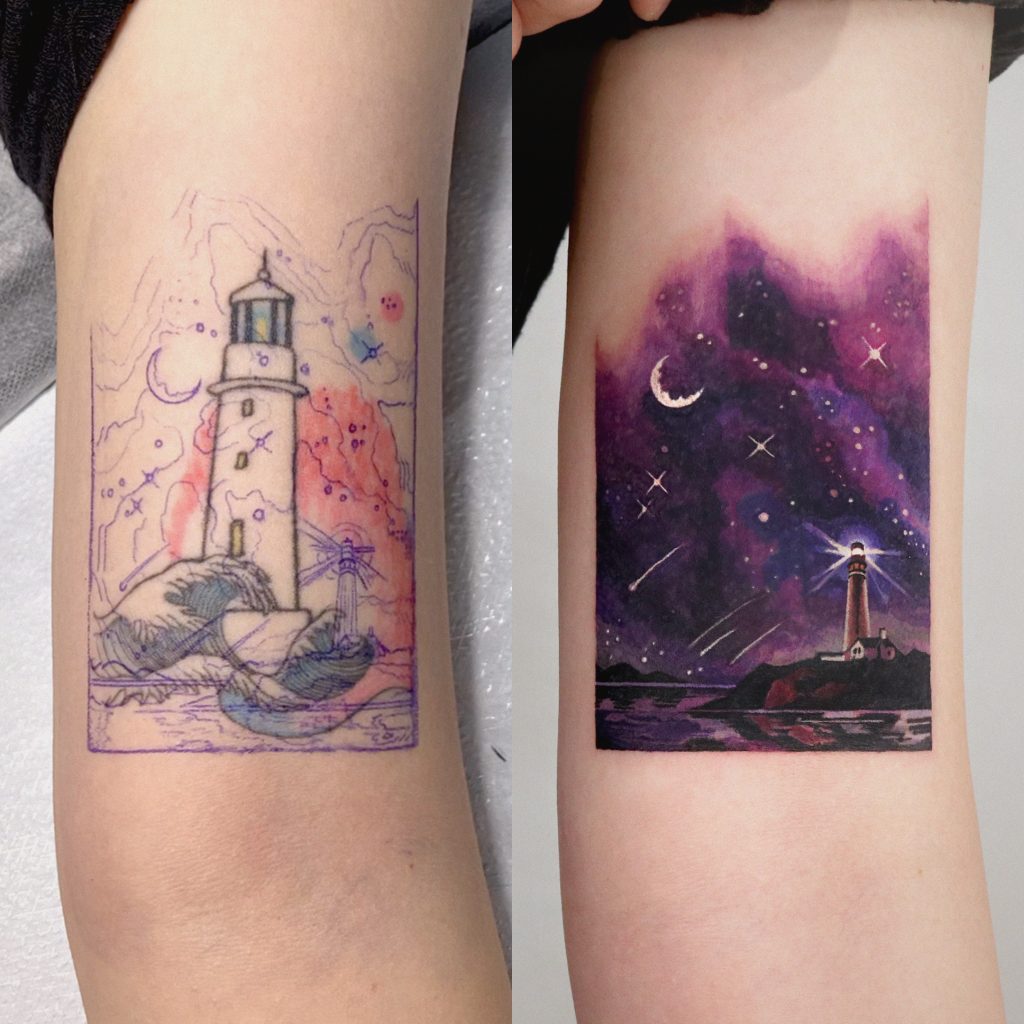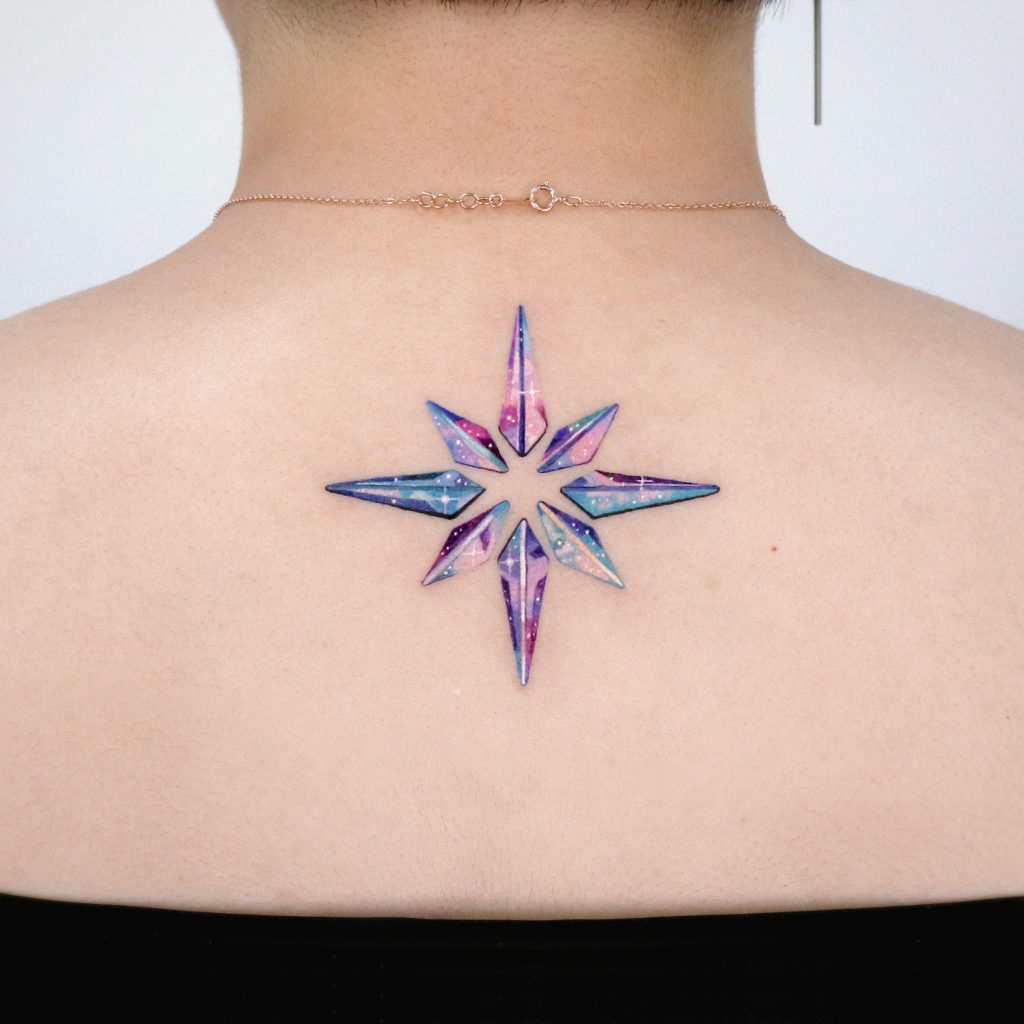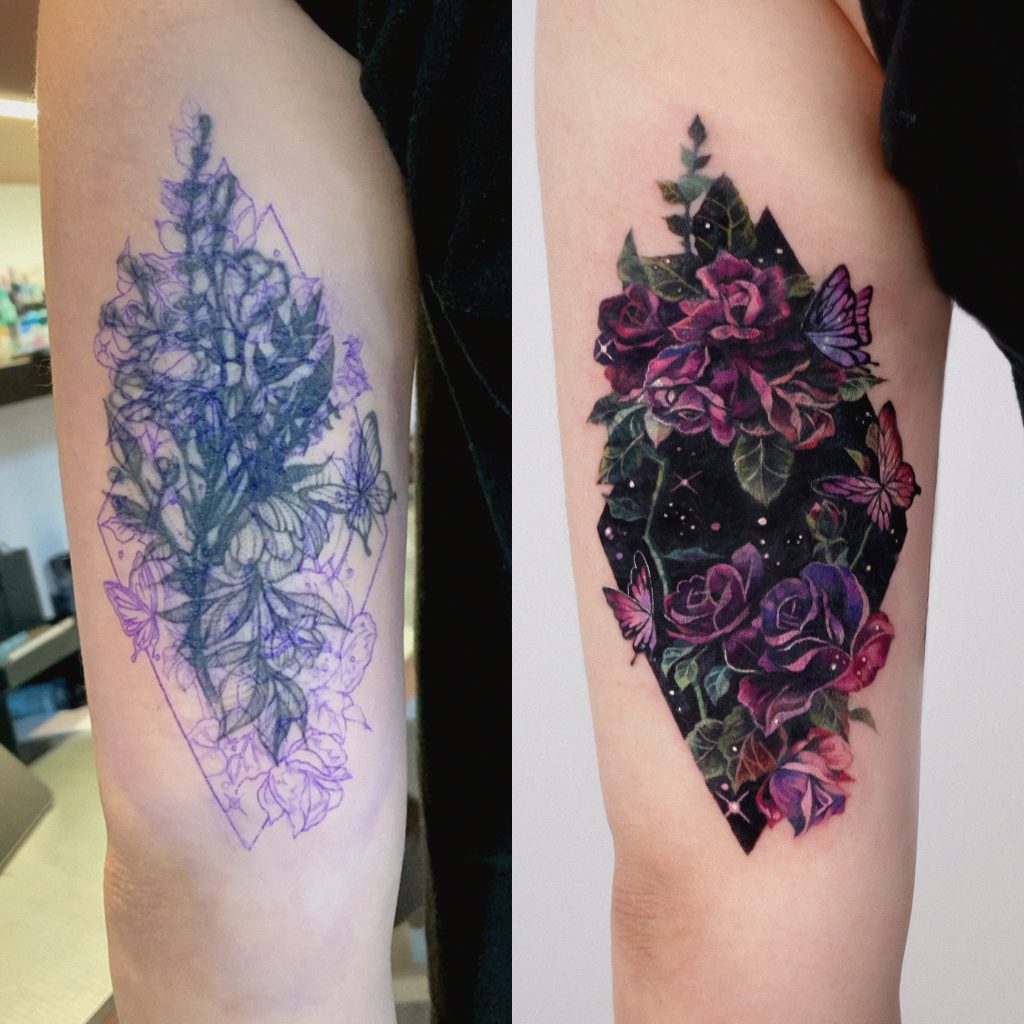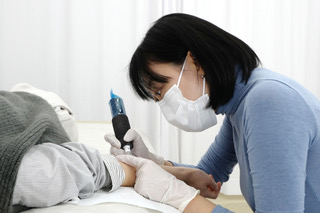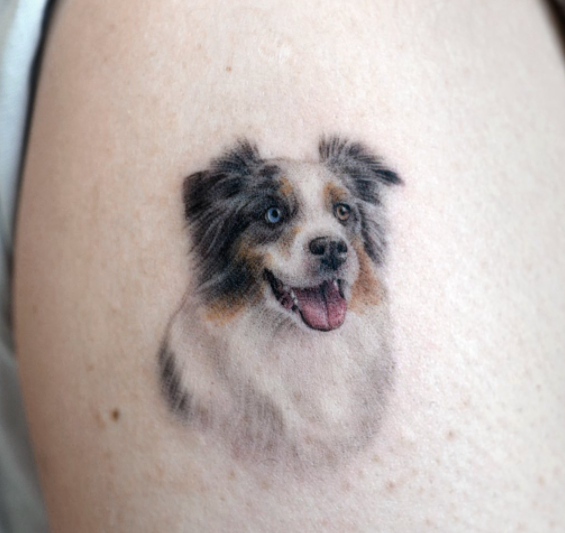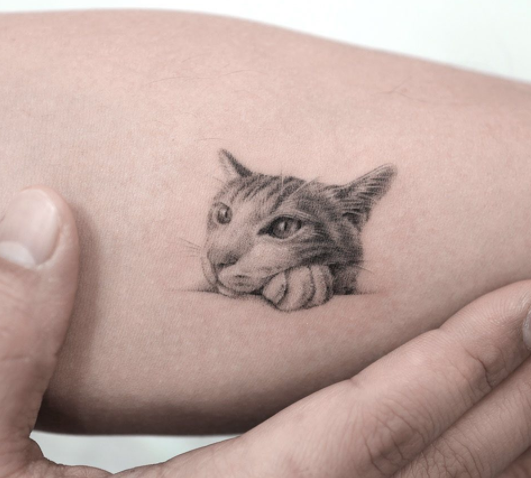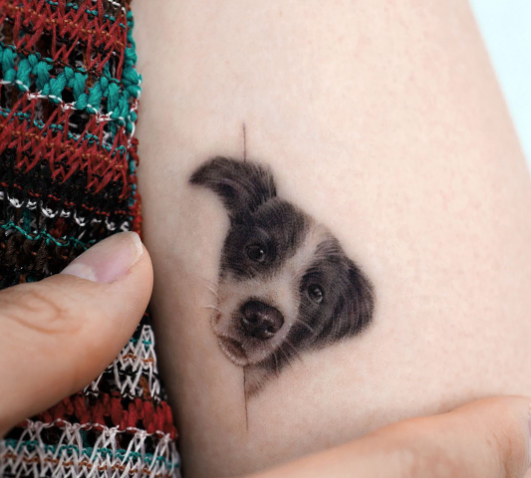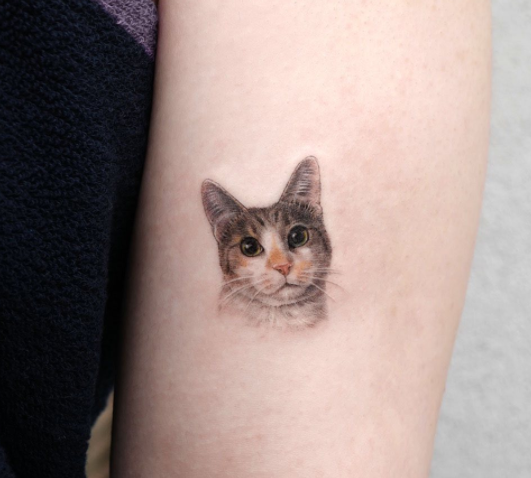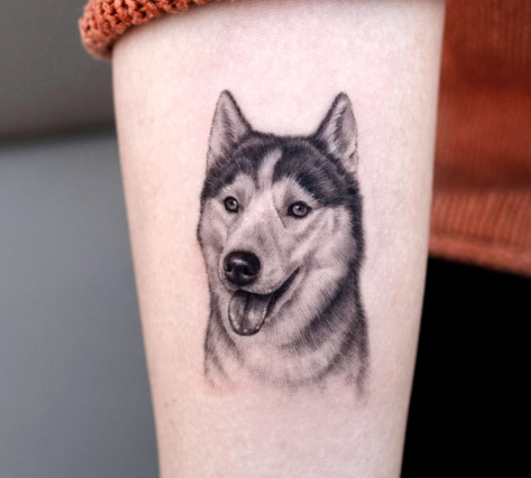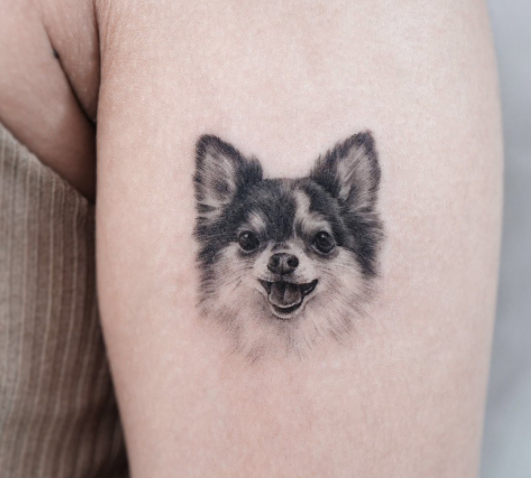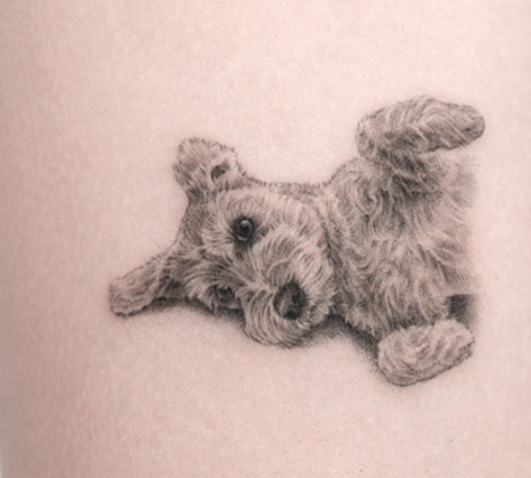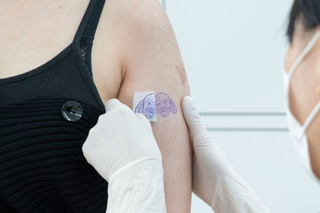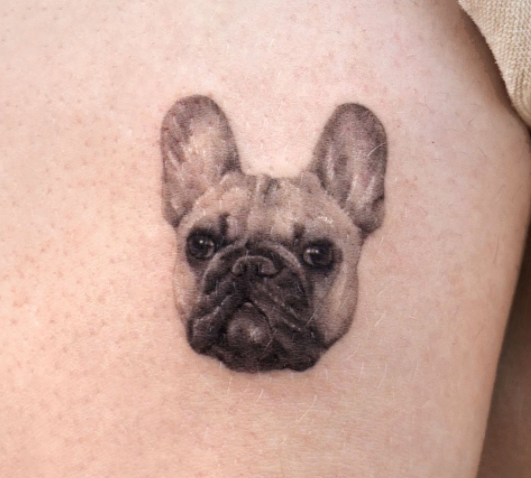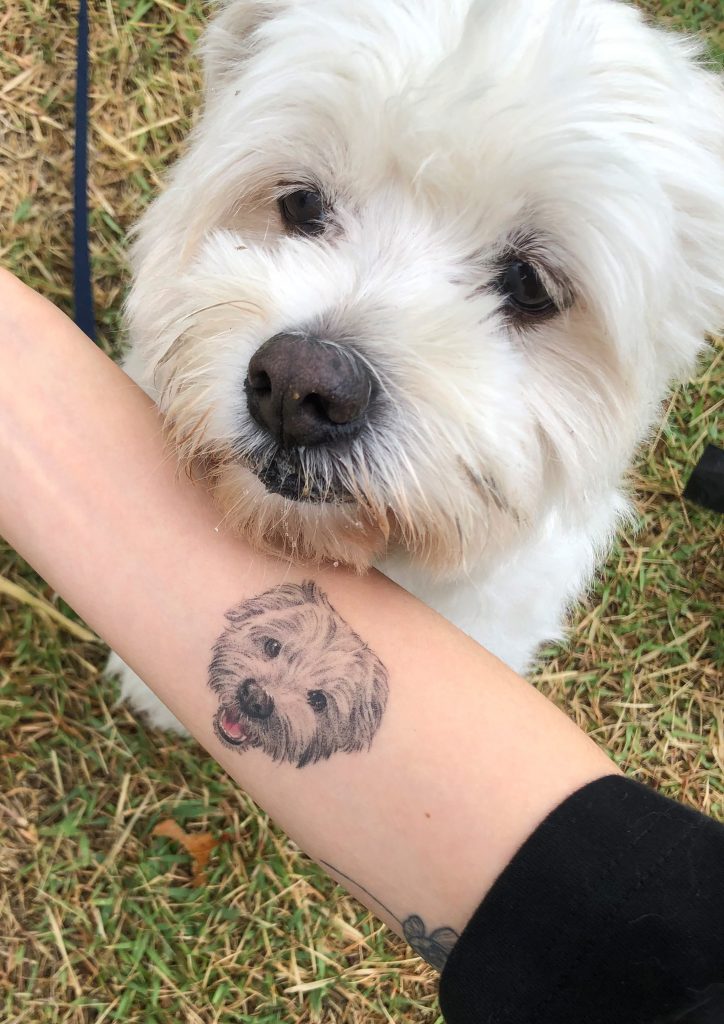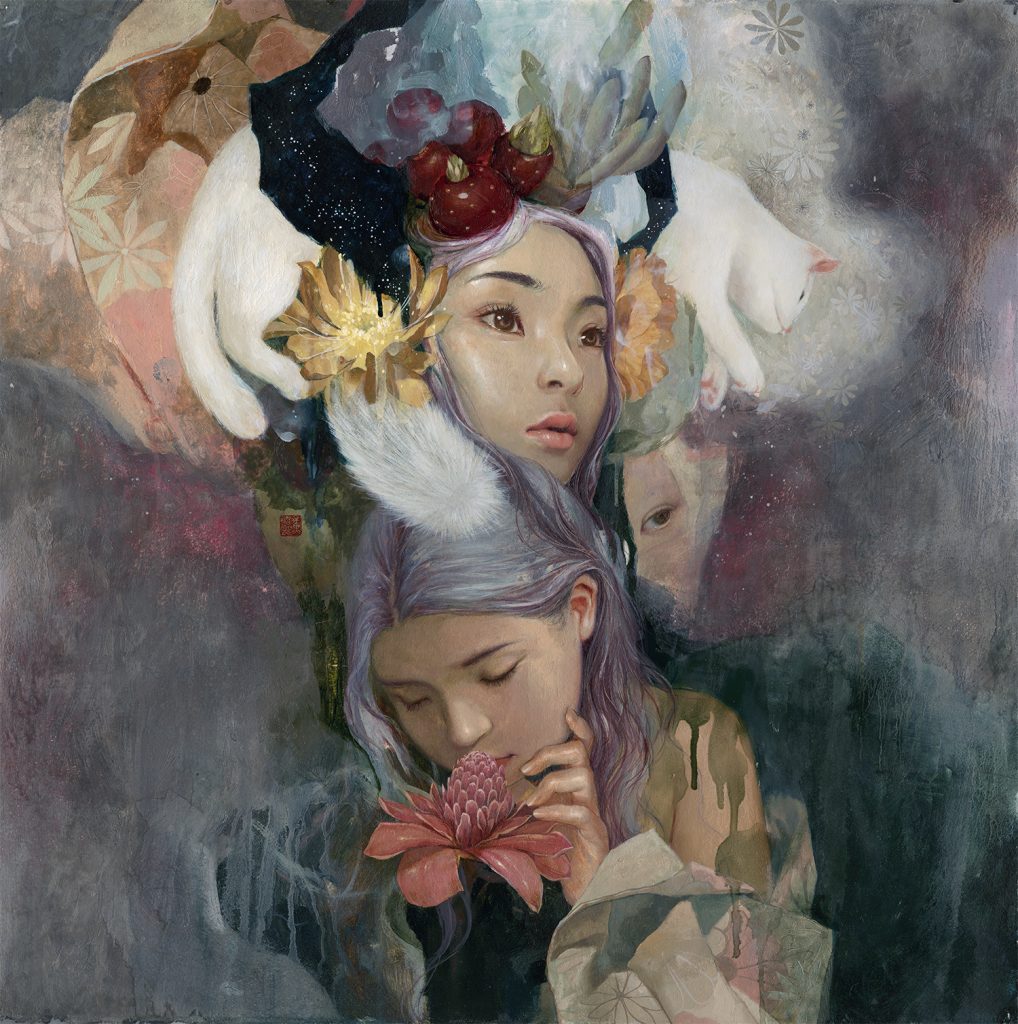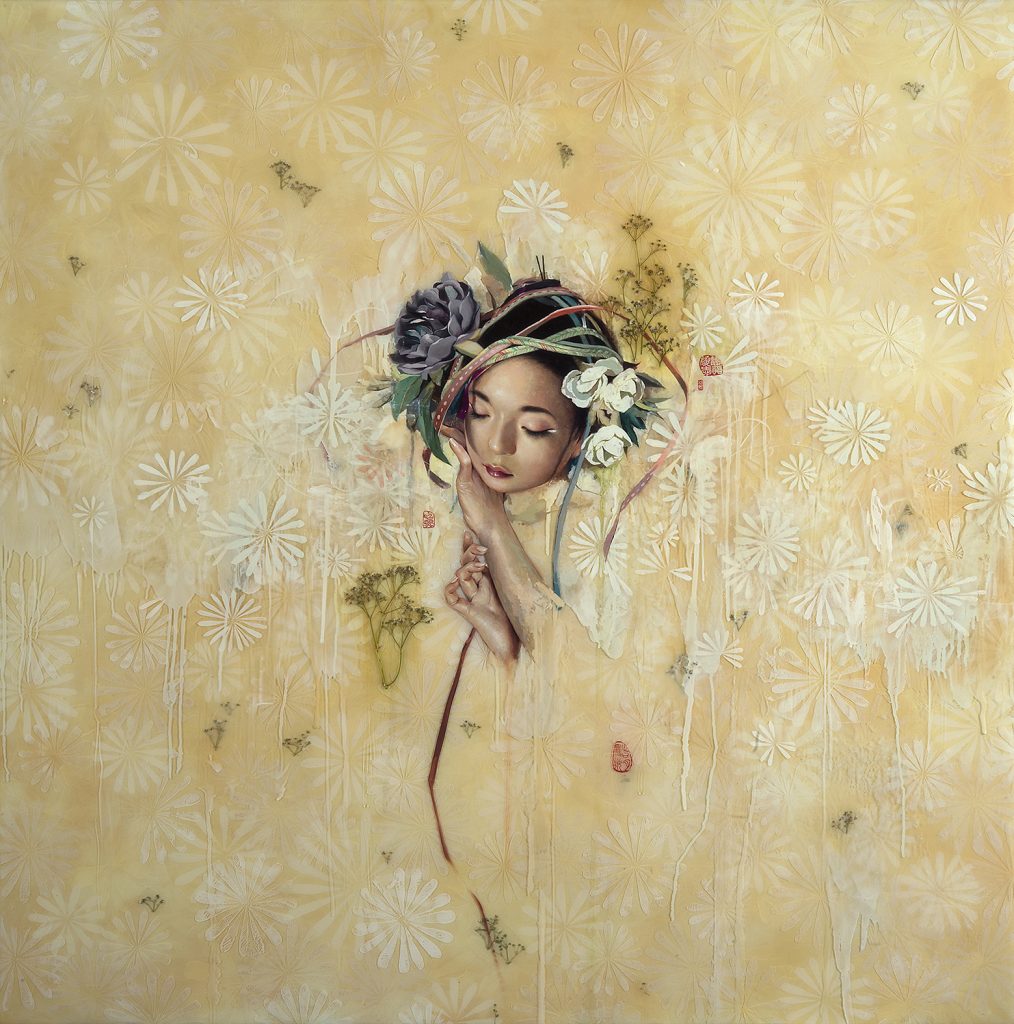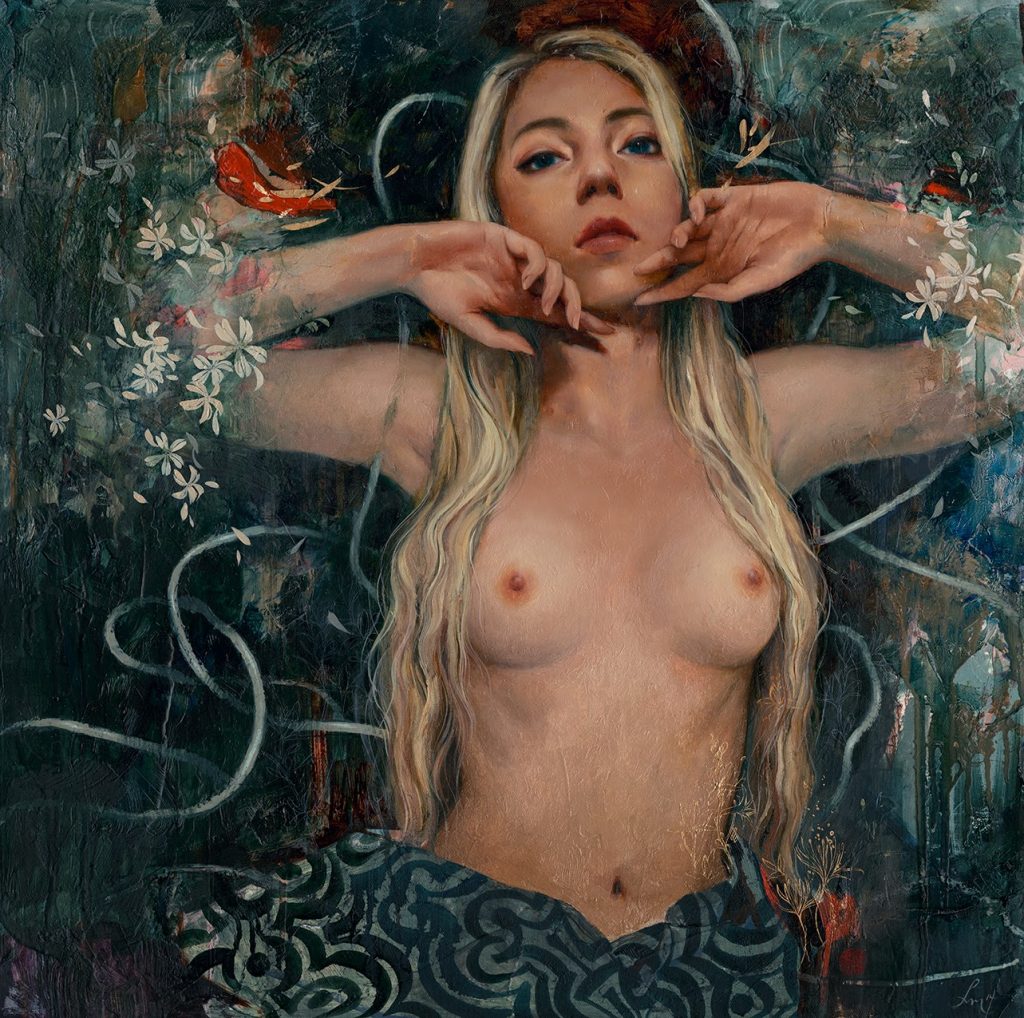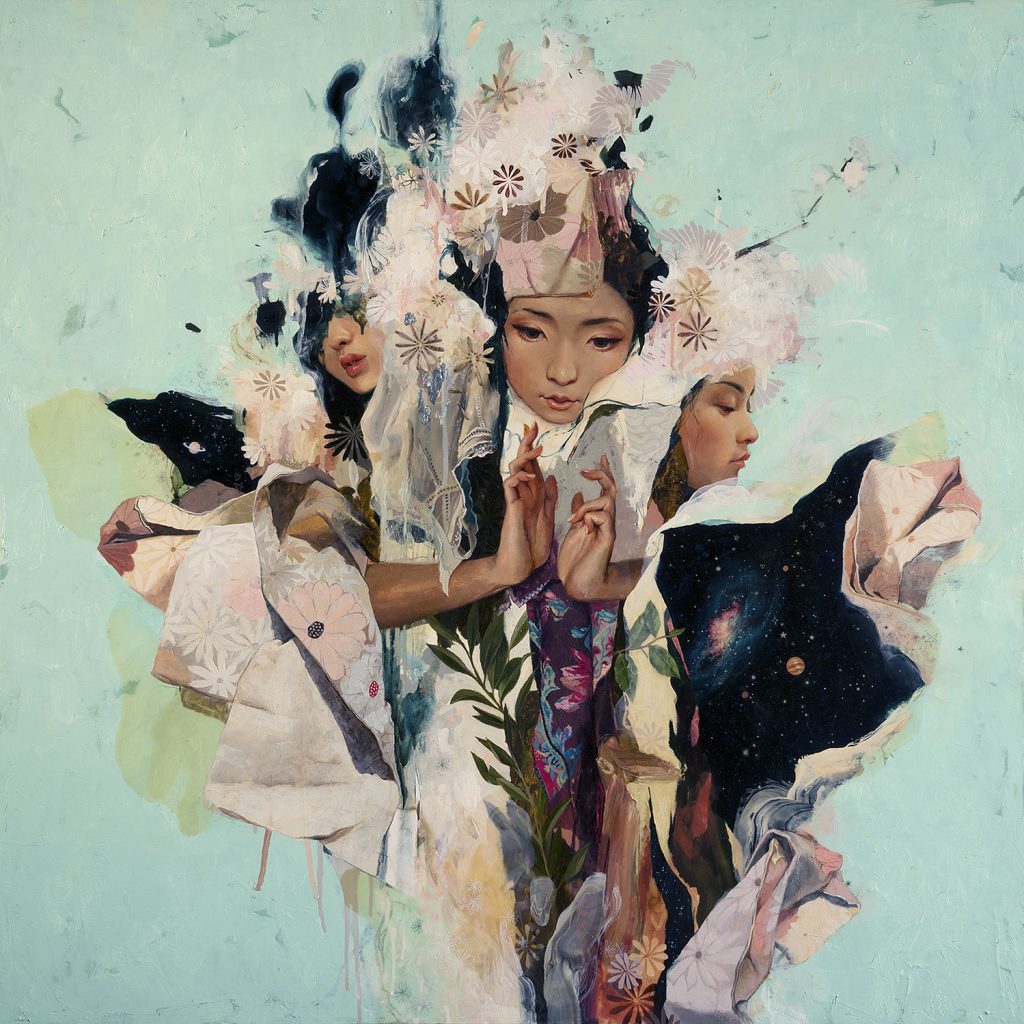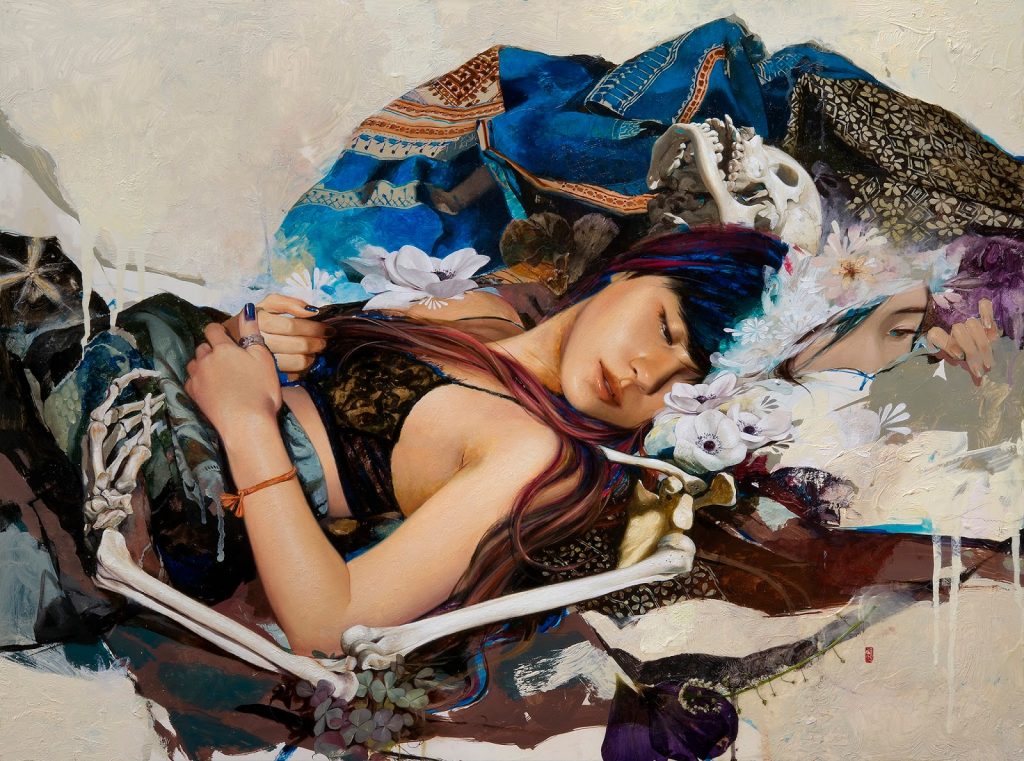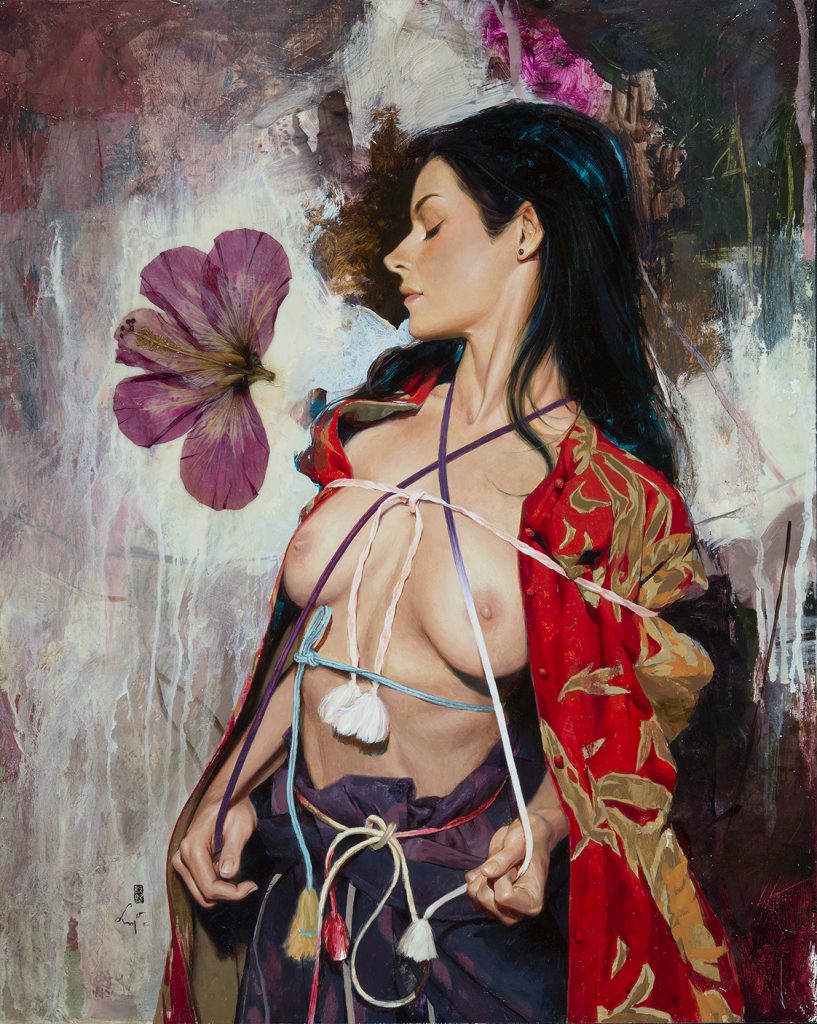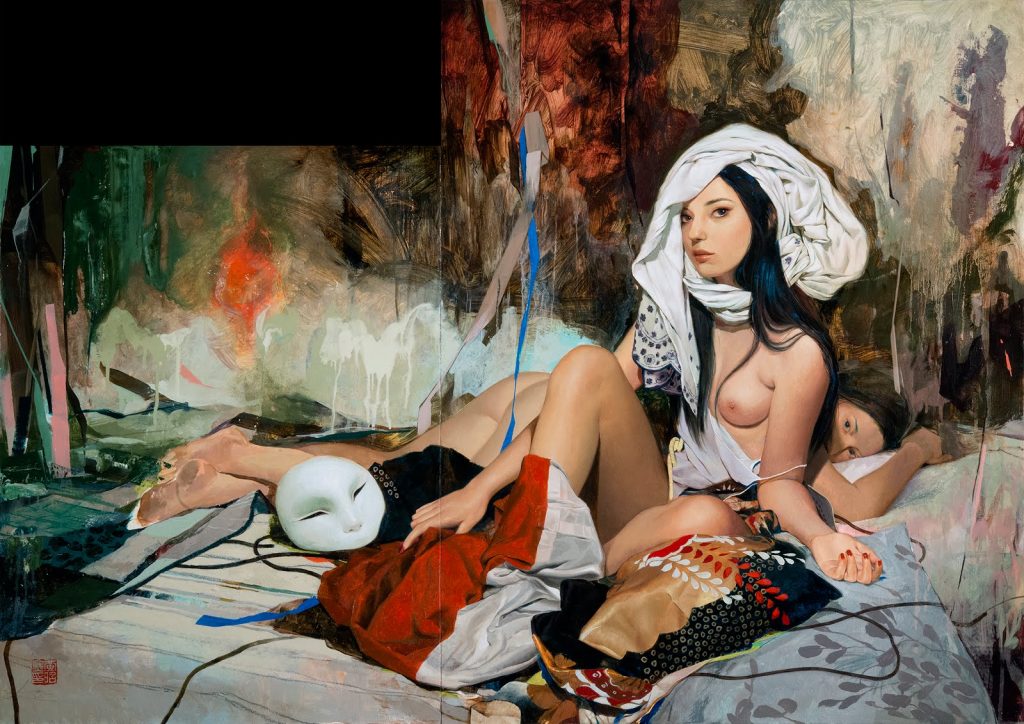Dami Nam or as you might know her @daldam__, runs Soda Shop in Itaewon, Seoul, Korea. We chat to the colour tattoo artist about her tattoos, inspiration behind her painting-like designs and the tattoo education programme she hosts…
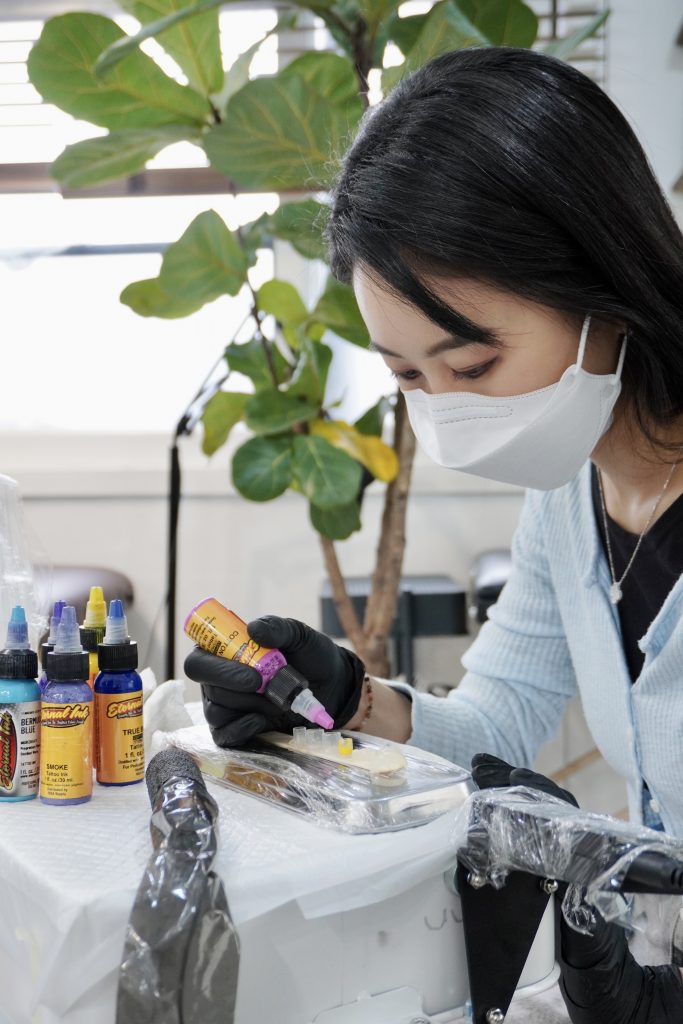
What inspired you to become a tattoo artist and how did you become one? I’ve always enjoyed drawing ever since I was a child. I wanted to get a job in an art-related field when I became an adult as I was so interested in painting. I had studied painting for a long time, but I worked at a “regular” company for a while for the stability it offered. However, when I realised I couldn’t draw anymore I became depressed, which led me to search for a way to keep drawing as a professional. I started tattooing after a friend of a tattoo artist I ad grown up with advised me to.
Can you tell us about your experiences in the tattoo industry? I’ve been tattooing for six years and I run a soda shop in Itaewon, Seoul. I also work as a mentor, educating trainees who want to learn my tattoo techniques.
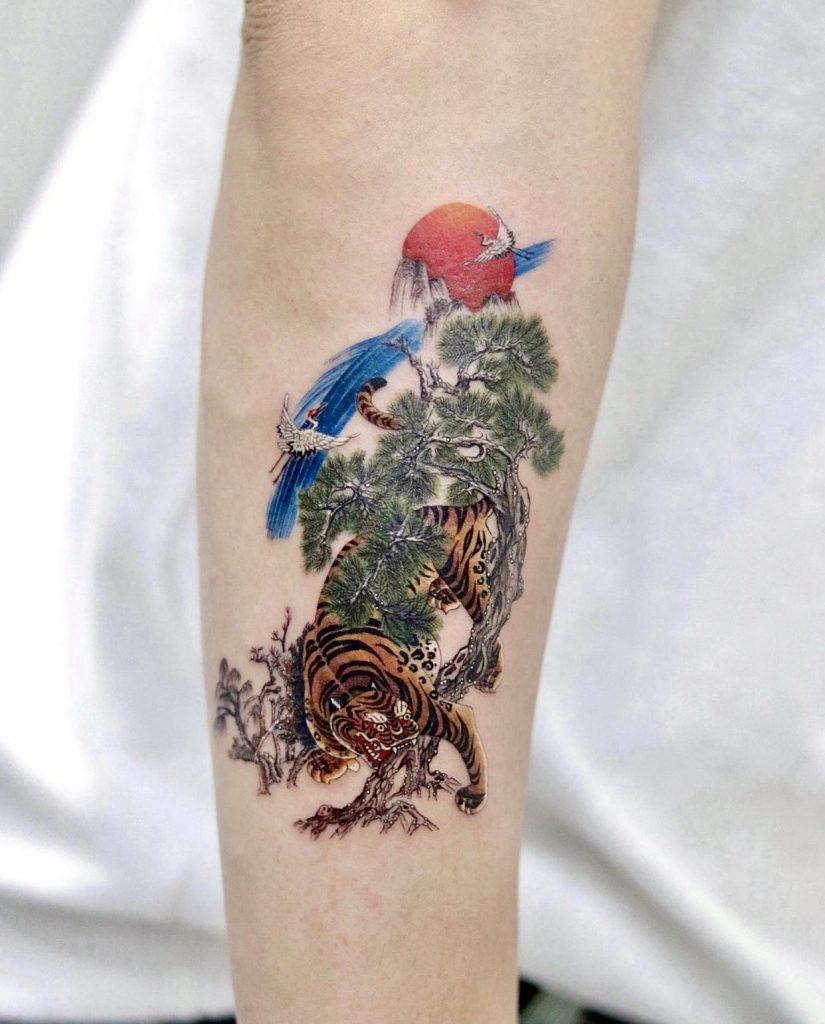
Can you tell us more about your tattoo education? I had a lot of people asking about tattoo related classes so I started my tattoo education by chance. I’ve now established a stable apprenticeship system.
Using each apprentice’s unique personality, I teach them the skills required for tattoo work and educate them on how to turn their ideas into wonderful tattoo designs. In addition, my apprentices are thoroughly educated in the hygienic aspects of tattooing, such as infection prevention. Also if they develop their skills to a good level they can work at my shop.
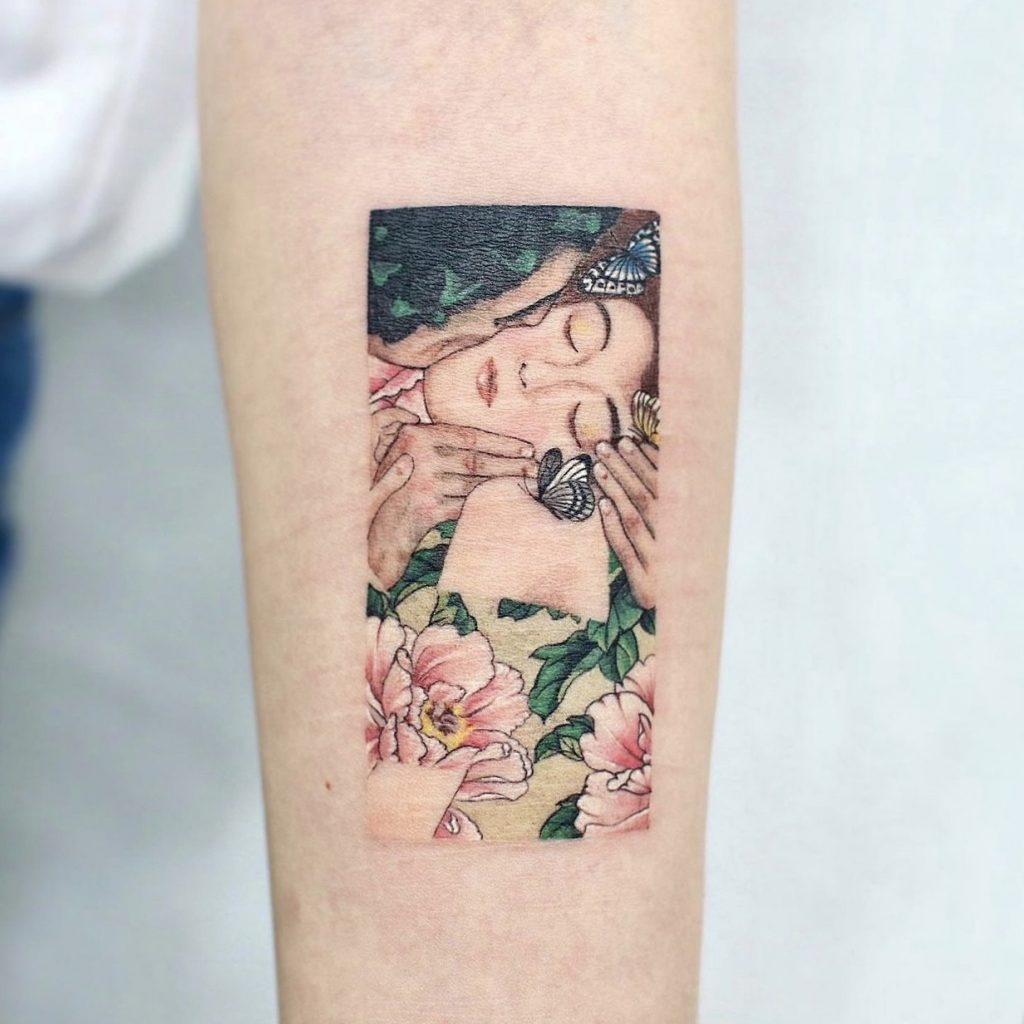
How would you describe your work? I mainly express oriental paintings through tattoos. Most of all I like to match flowers and animals to traditional accessories using bright colours. I also tattoo detailed landscapes with a thin line background. I believe the charm of my work is the glorious feeling felt when I express various landscapes in small tattoos.
Are there any challenges you face when doing tiny tattoos? There are moments when I design small parts, such as an eye where I experience a slight hand tremor. This makes me nervous, but I take a deep breath and work with a calm mind to draw the pupil in the right place.
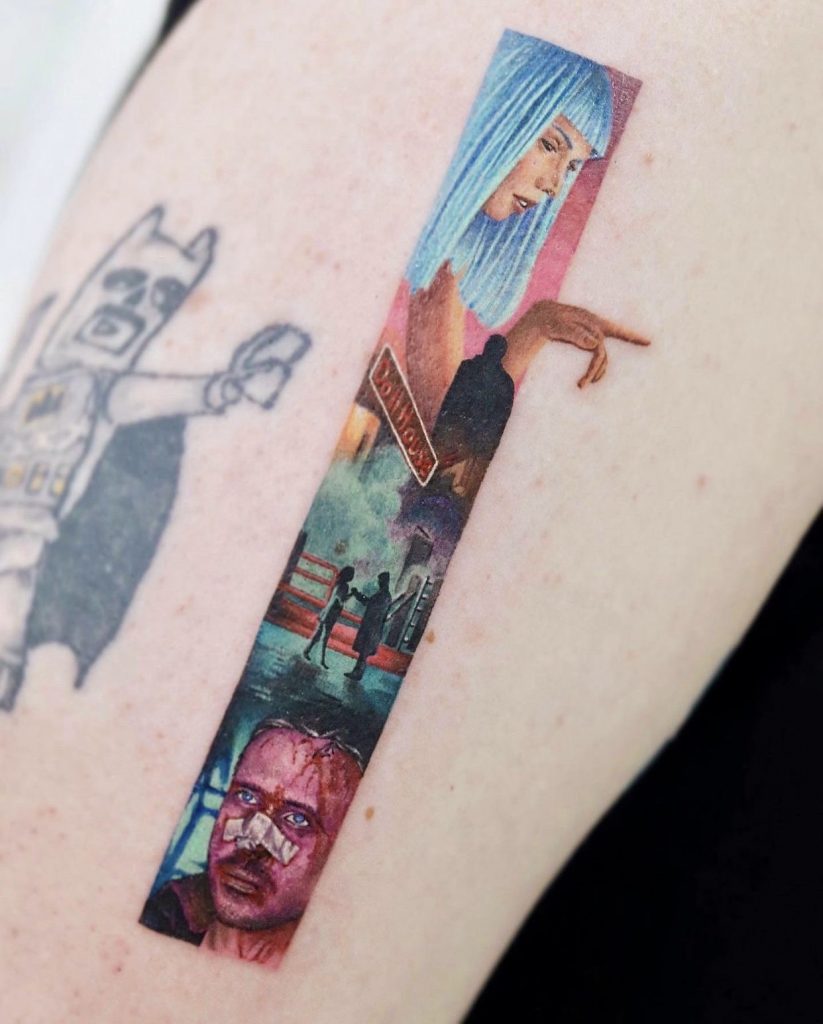
Have you always tattooed like you do now? No. I learnt to tattoo by myself without a teacher, so there was a lot of trial and error at first due to my lack of tattoo skills.
Since then I have researched and developed various tattoo techniques. When I did run into problems while working I sought advice from seniors with more experience than me.
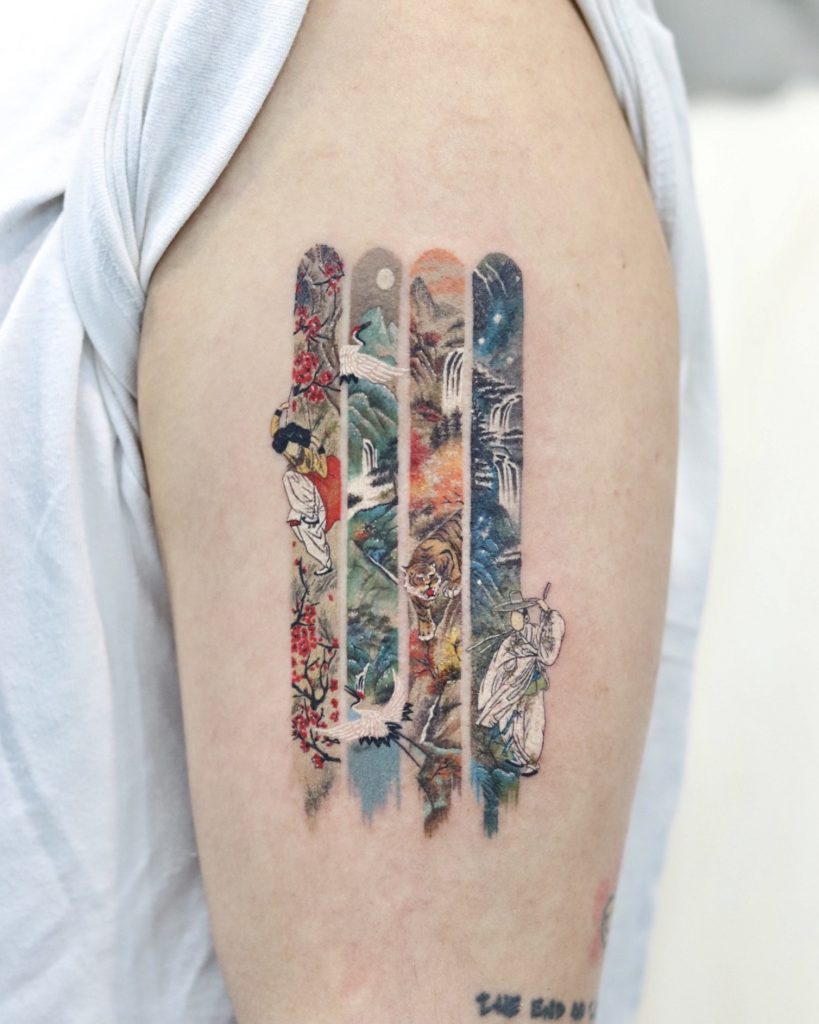
Can you tell us about the process behind your tattoos? In my daily life an idea will suddenly come to my mind. There are moments when I think, “Oh, this design would be lovely.” I write it down on my smartphone’s notepad so I don’t forget it.
My tattoo work is similar to that of other tattoo artists, as I design with care and work using transfer paper. If there’s one thing I’m particularly concerned about, I try to make sure that every detail is moved to the skin when I’m tracing the design.
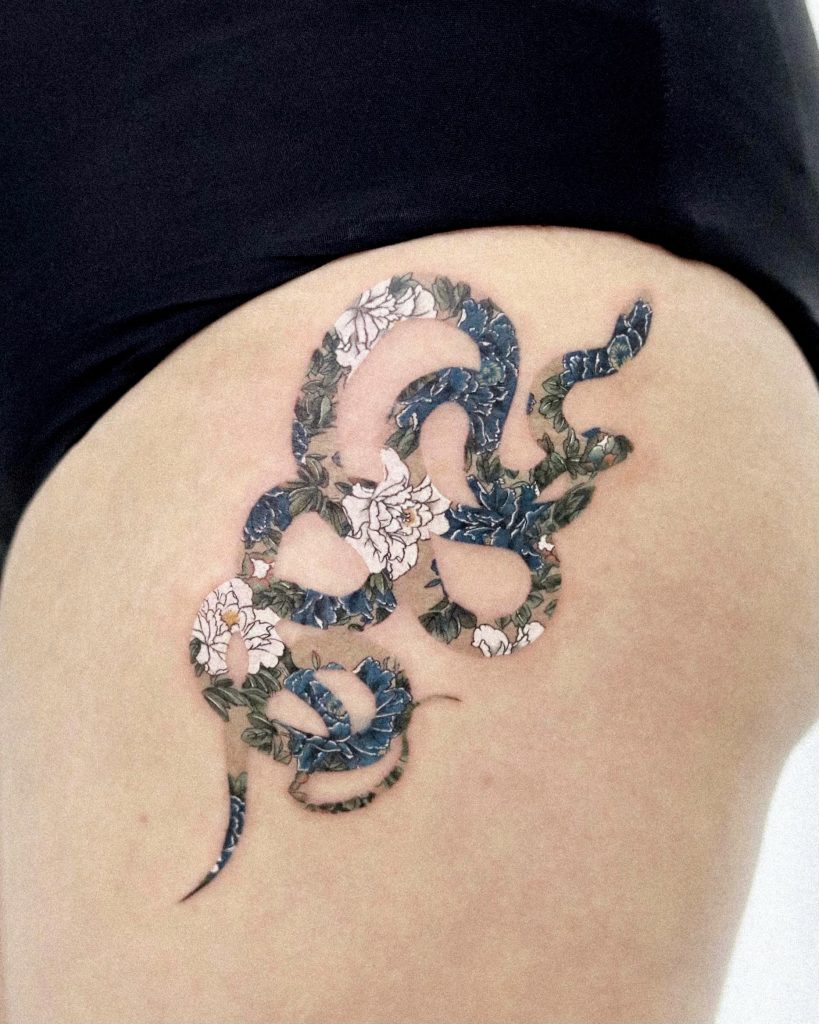
What inspires you? Traditional Korean elements have had the most significant influence on my tattoo work. I like the beauty of the old things, from the beautiful colours to paintings with traditional beauty as well as traditional decorations that are not used in modern times. Aside from that, the scenery I see and a beautiful scene from a movie can be sources for my tattoo work.
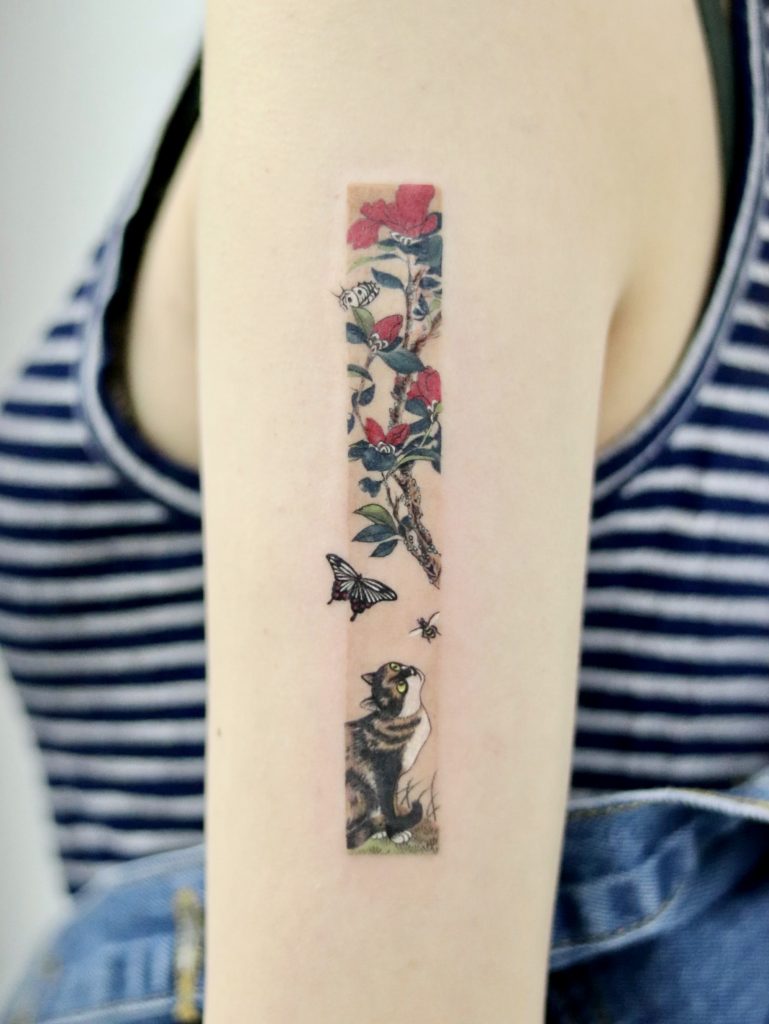
What do you like to tattoo and what would you like to do more of? It’s a lot of fun for me to work on tattoo pieces with different colours. I love to recreate the beautiful scenes of oriental paintings and movies through tattoos. I’m also interested in traditional accessories these days, so I’m trying to develop my work by making those accessories into tattoo designs. Also, I want to be a good mentor to my students.
Do you prefer to do colour or black and grey tattoos? It’s difficult for me to choose between the two techniques as they’re attractive in different ways. Colour tattoos, in my opinion, are excellent because they allow me to create artworks by combining different colours, while black tattoos are appealing because they make it possible to express objects by using calm contrasts.
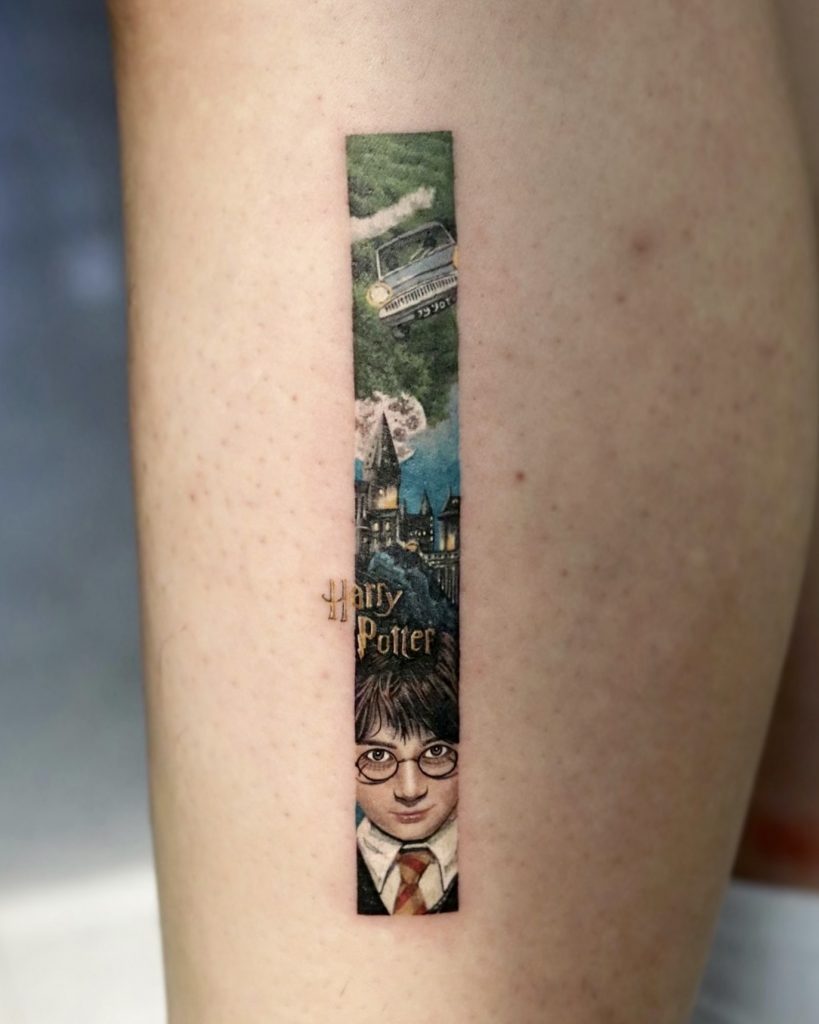
Can you tell us about your own tattoos? Are you a tattoo collector? There isn’t a tattoo artist out there who doesn’t collect tattoos. I’m a big fan of getting tattoos and I have a lot. I particularly enjoy getting flowers in gentle colours. Ornament style tattoos are very fashionable these days. So I’m thinking about getting another pretty tattoo.

What’s the tattoo scene like where you are? I work in Itaewon, Seoul which is Korea’s capital, it’s an area with a high concentration of foreigners. There are a lot of tattoo artists here who do fantastic work.
To remain active and not fall behind in the tattoo world, I believe it is critical to accurately understand your customers’ needs. To maintain my unique style I also strive to create tattoo works that meet all these requirements.
How have you been affected by the pandemic? In the early days of the COVID-19 pandemic my tattoo shop was significantly affected as foreign customers accounted for about half of the total number of customers in my shop. Also, as the COVID-19-related quarantine policy was implemented in Korea, there were various restrictions on the shop’s operation, so I also had business difficulties. However, my shop’s business situation has dramatically improved since the “With Corona” policy was implemented.
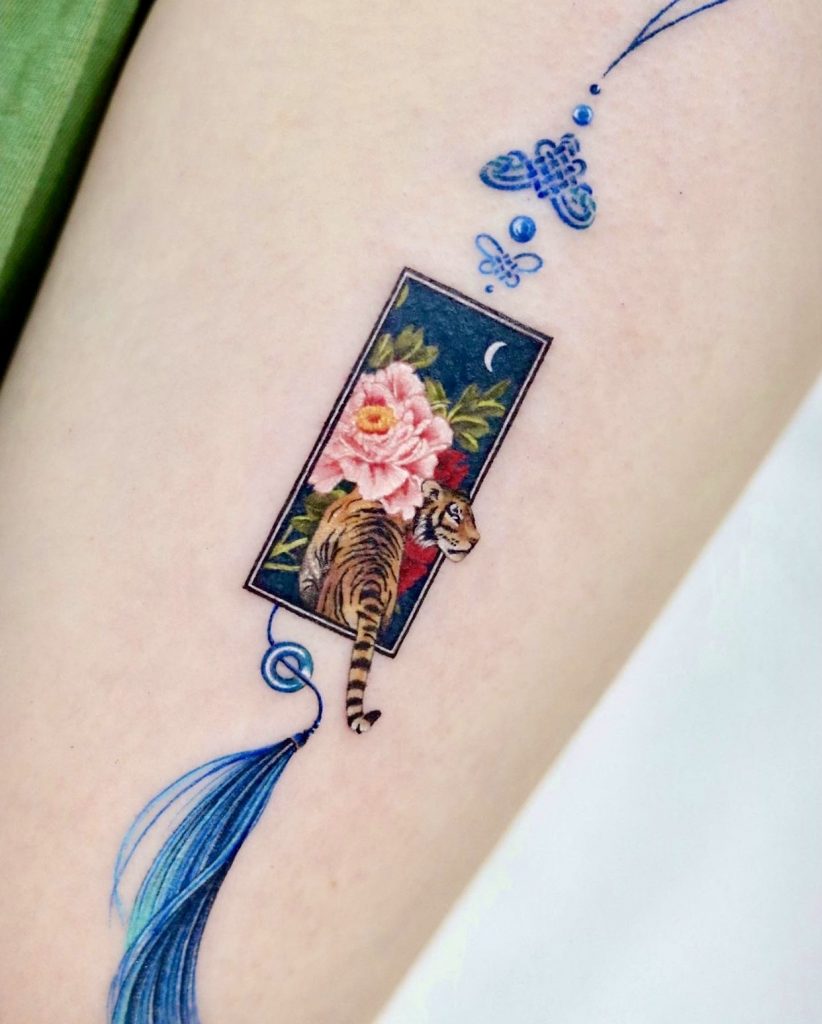
When and how did you open your tattoo shop? Originally I was running a tattoo studio with other tattoo artists, but since we were running it together it was difficult to carry out what we all wanted. So I decided to open my own tattoo studio three years ago and that’s when soda shop was made.
What is the shop like including the other artists? Soda shop has a bright and free vibe and consists of female tattoo artists only. We didn’t intend it but somehow we just got together. We’re all close and always supporting each other’s work too.
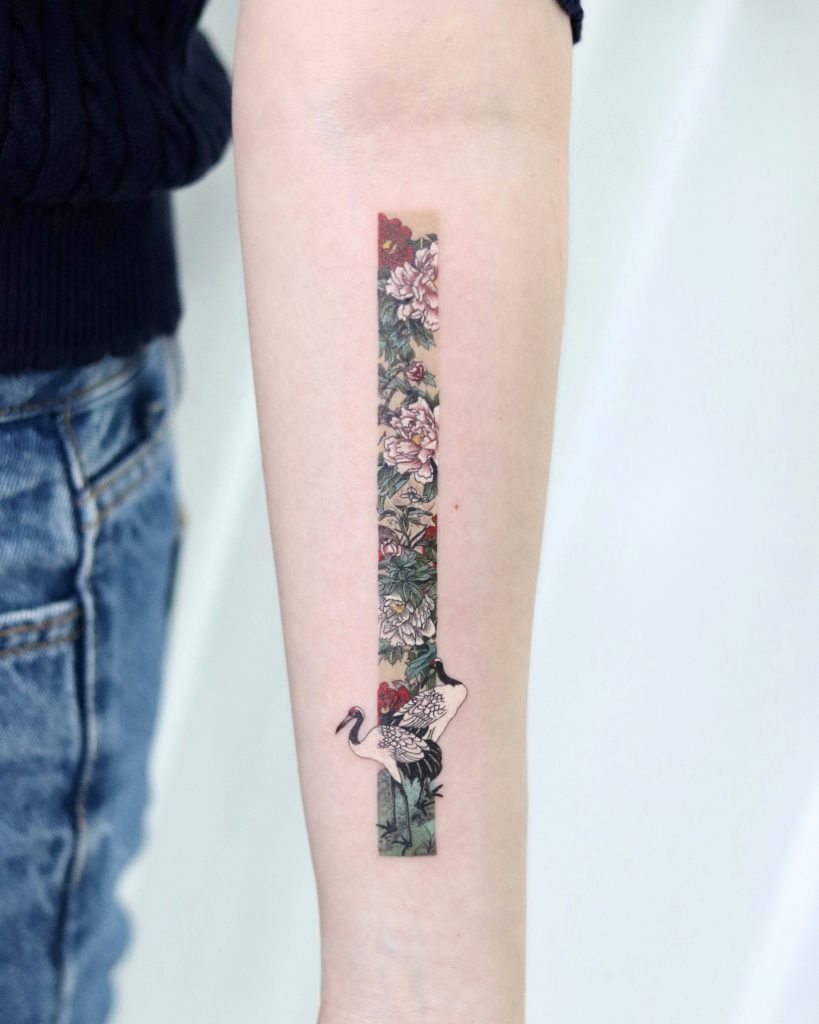
What moment in your career are you most proud of? I am proud when my customers are pleased with their tattoo, when I am satisfied with my work or when my students create outstanding tattoos.
Follow @daldam__ (if you don’t already) for more incredibly beautiful tattoos.
